How to Create a Subordinate SSL CA in Azure
Prerequisites
How To Create Issuing/Subordinate CA - Video Version
Overview - How To Create Issuing/Subordinate CA
A Subordinate or Issuing CA is critical on any PKI hierarchy this is the Certificate Authority in charge of issuing end certificates. In this page we will guide you on how you can create your own SSL CA and chain it up to a Root CA (EZCA Root or Offline Root).
Getting Started on Creating Your Issuing CA
- Go to https://portal.ezca.io/
- Login with an account that is registered as a PKI Admin in EZCA.
- Navigate to Certificate Authorities.
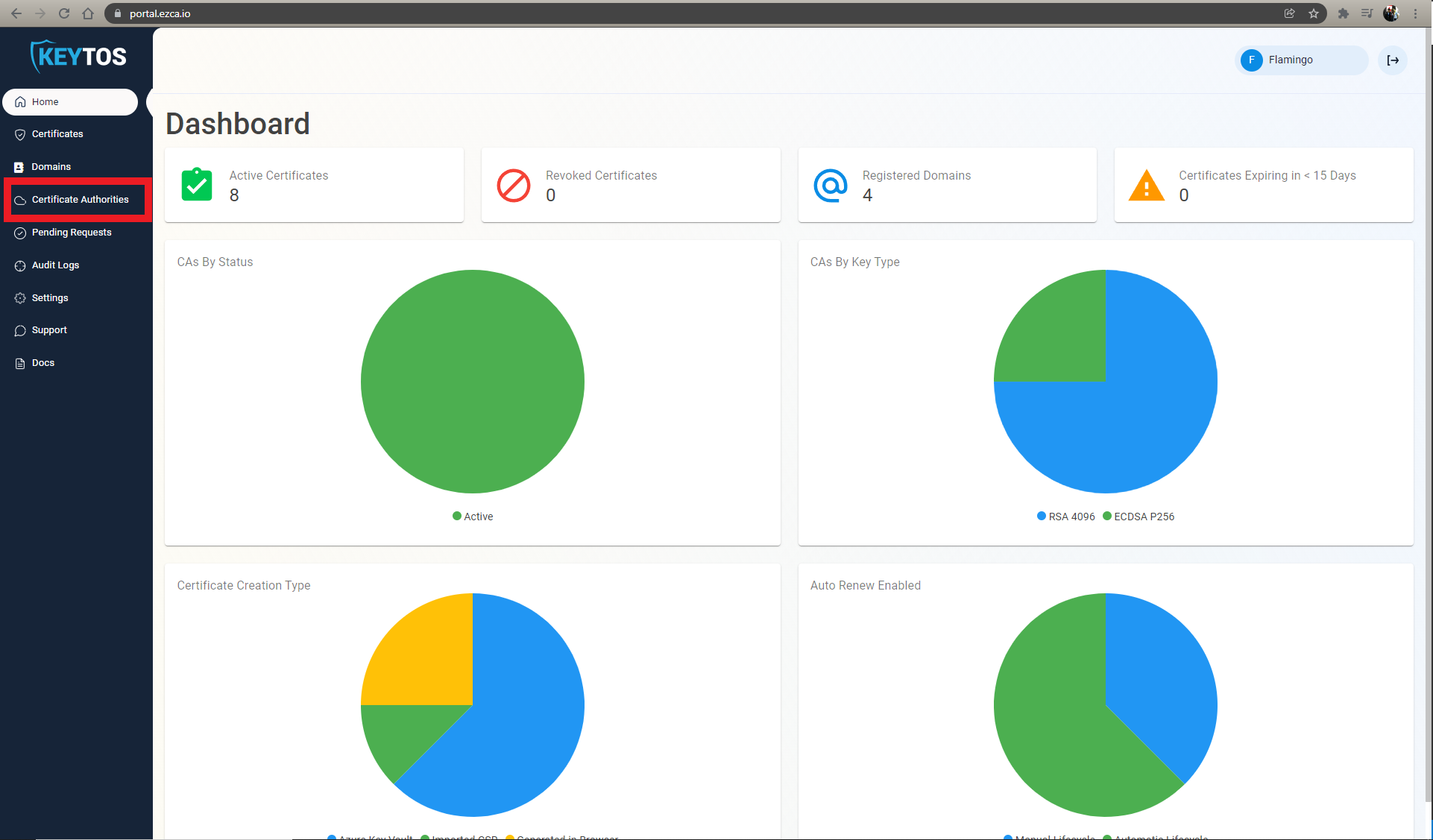
- Click on the “Create CA”
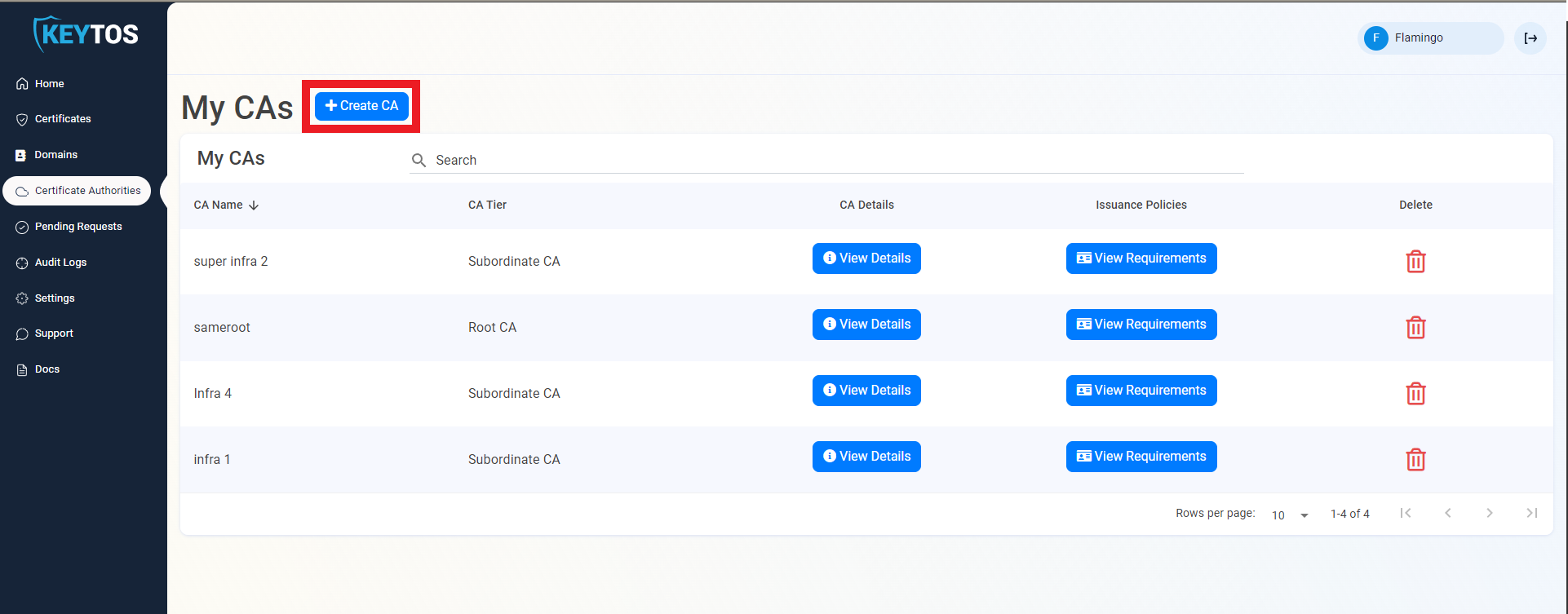
- Select Subordinate/Intermediate CA.

- Click Next
Entering CA Information
- Enter Common Name: This is the name of the CA how it will appear in the certificate.
- (Optional) Enter CA Friendly Name This is the name that will appear in the EZCA portal, by default we will use the Common Name
- (Optional) Enter the Organization The Organization field is an optional certificate field that usually has the company name.
- (Optional) Enter the Organization Unit The Organization Unit field is an optional certificate field that usually contains the unit that runs this CA (For example: IT or HR).
- (Optional) Enter the Country Code The Country Code field is an optional certificate field that identifies the country where this CA is located.
- Click Next.
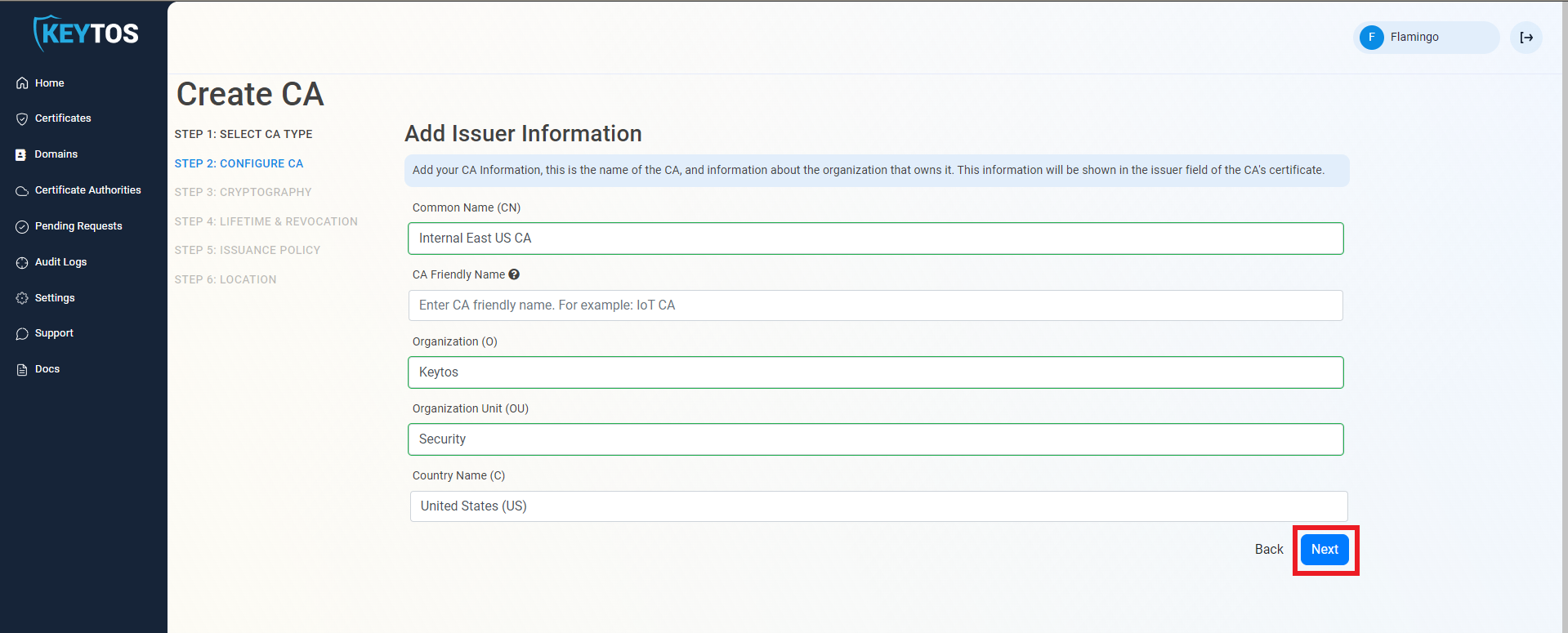
Cryptographic Requirements
- Unless you have specific compliance or security requirements, leave the default cryptographic values for best security and compatibility.
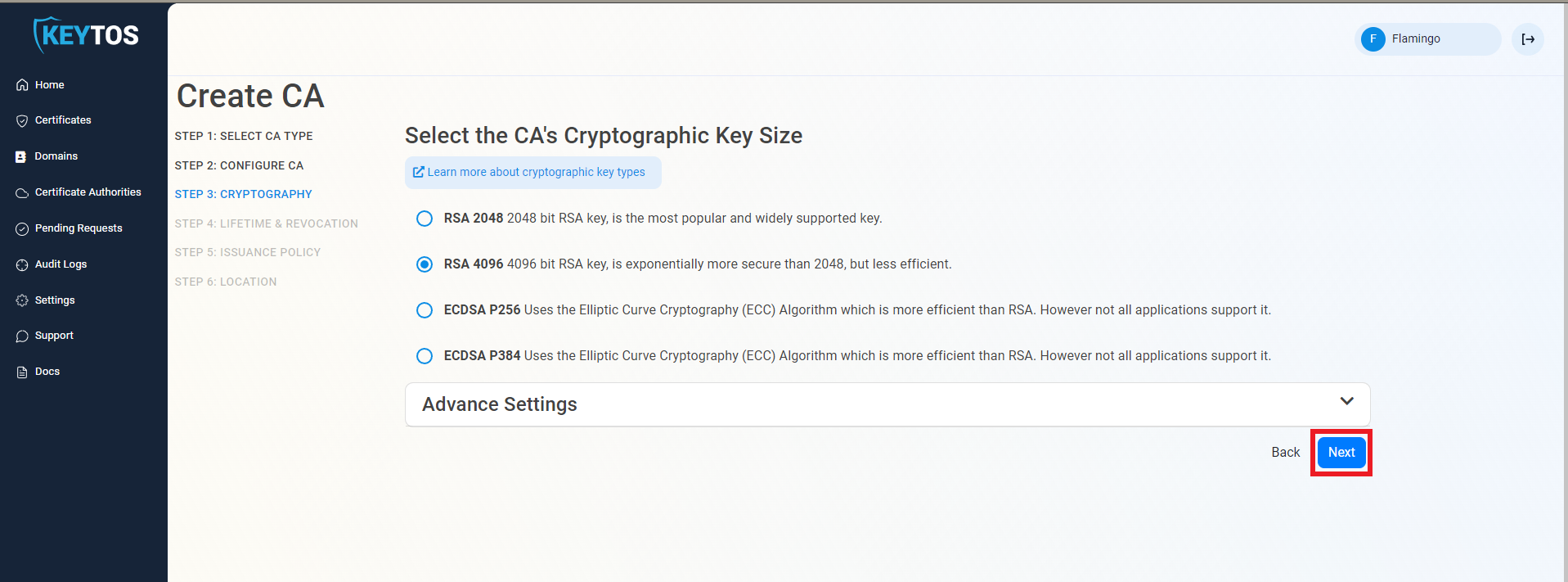
Set Your CA Validity Period
- Select your Validity Period Learn more about Validity Period best practices
- Enter a Notification Email this email address (as well as the PKI Administrators) will get all the notifications for the lifecycle of the CA.
- Select the lifecycle action you want EZCA to take when expiry of the CA is approaching
- Select the percentage of lifetime of the certificate when you want EZCA to start taking Lifecycle actions.
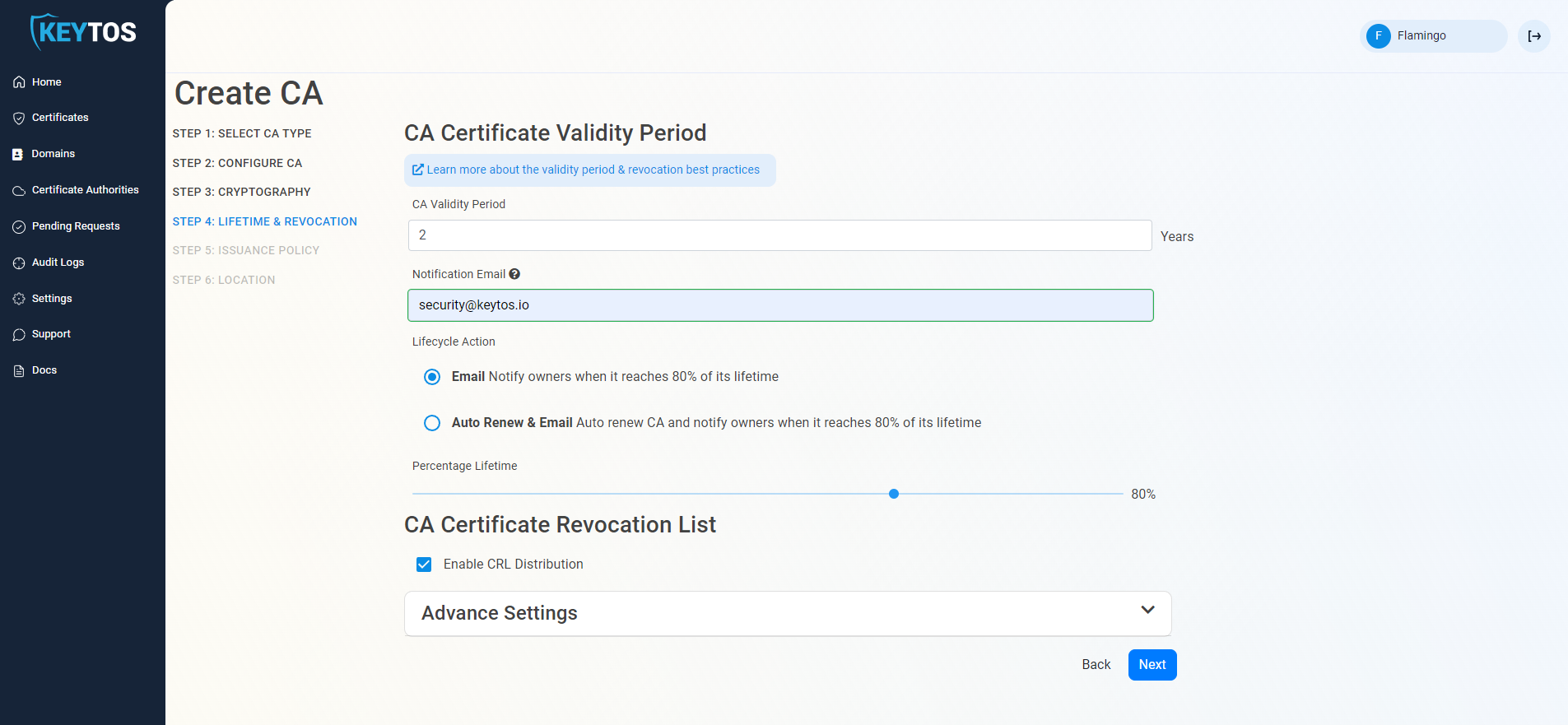
CA Certificate Revocation List
- Select if you want this CA should issue a CRL (Highly recommended)
- Click Next.
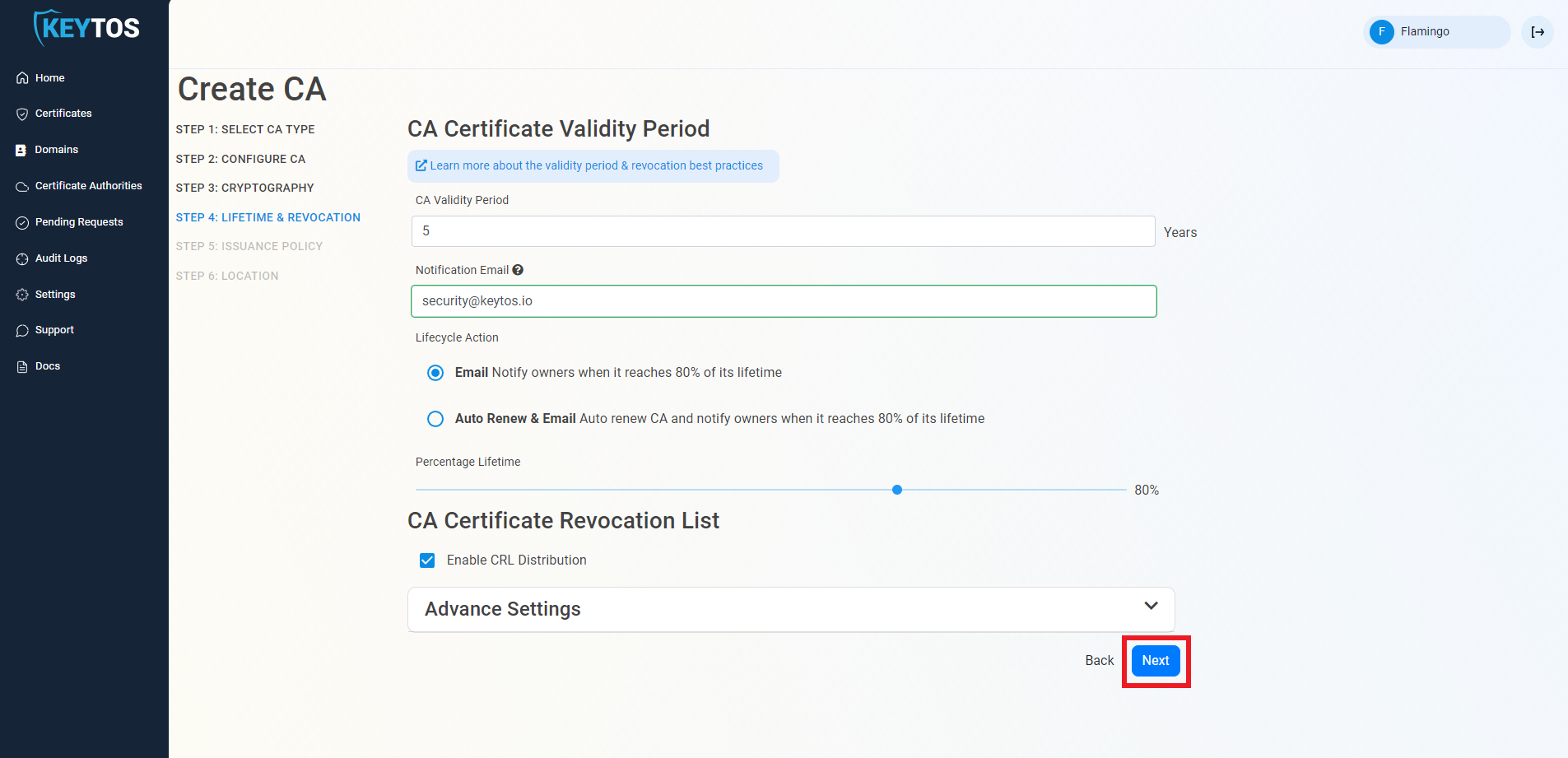
CA Certificate Revocation List Advance Settings
Changes to this section are only recommended for PKI experts with specific requirements.
- Click the expand button
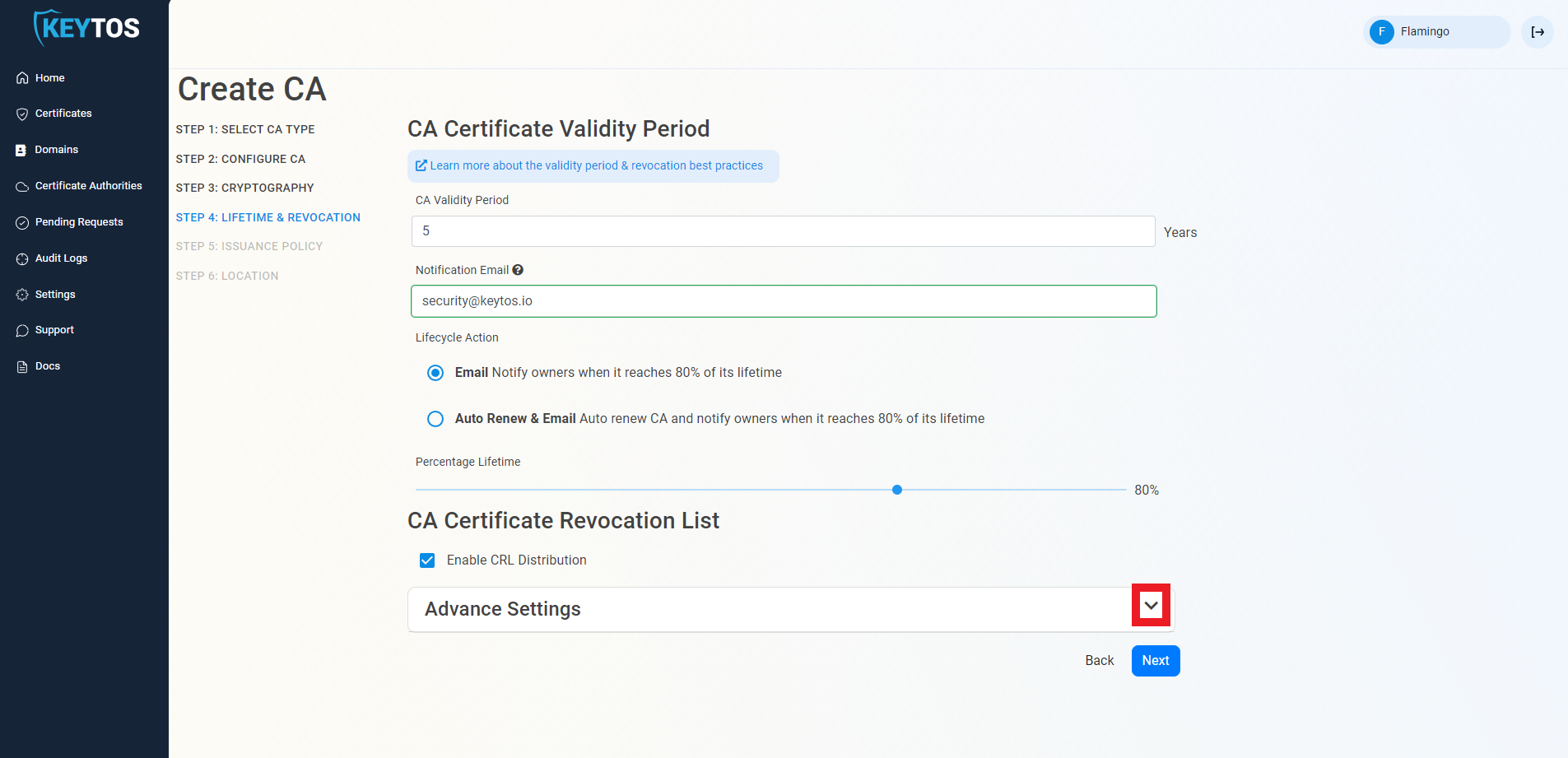
- Enter the desired CRL Validity Period in days
- Enter the desired CRL Overlap Period in hours
- (Optional) Enter the CRL endpoint where you will publish your CRLs
Custom CRL endpoints are supported by EZCA by adding the CRL endpoint as the CRL endpoint in the certificate. However, your PKI admins are responsible from getting the CRL from EZCA and posting it in that specific endpoint.
How To Enable OCSP (Online Certificate Status Protocol) For Your CA
Inside the CA Revocation advanced settings, you can enable OCSP for this CA. OCSP is only recommended if you have specific requirements for OCSP. While OCSP allows quicker revocation it increases the CA the cryptographic load and can limit the scalability of the CA (Basic CA allows 1 cryptographic activity per second, Premium CA 20 cryptographic activities per second, Isolated CA 160 cryptographic activities per second). Learn more about OCSP vs CRL
- If you want to enable OCSP, select the “Enable OCSP” option.
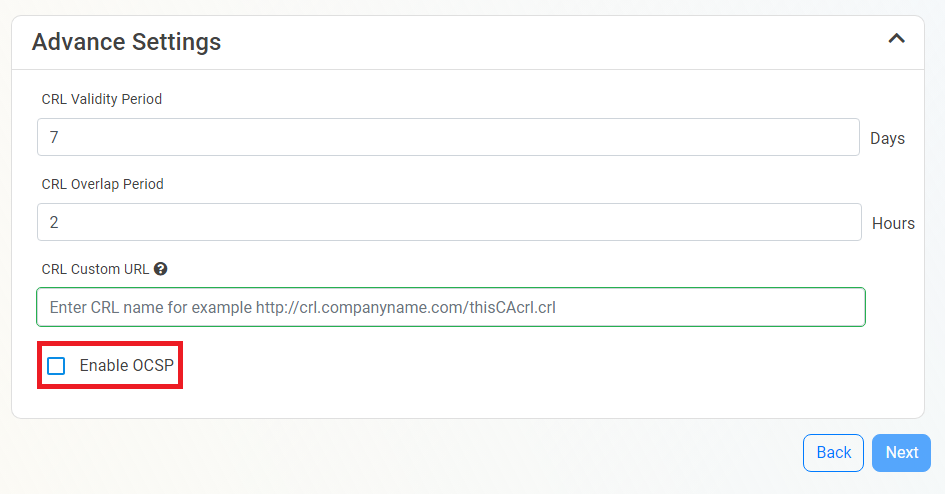
- Enabling the OCSP will create an OCSP endpoint for this CA in the same region you select for your OCSP (this is included with the price of your CA). If you require extra scalability you can create multiple OCSPs for your certificate authority in different regions. Note: Each extra OCSP will be charged as an extra Certificate Authority.
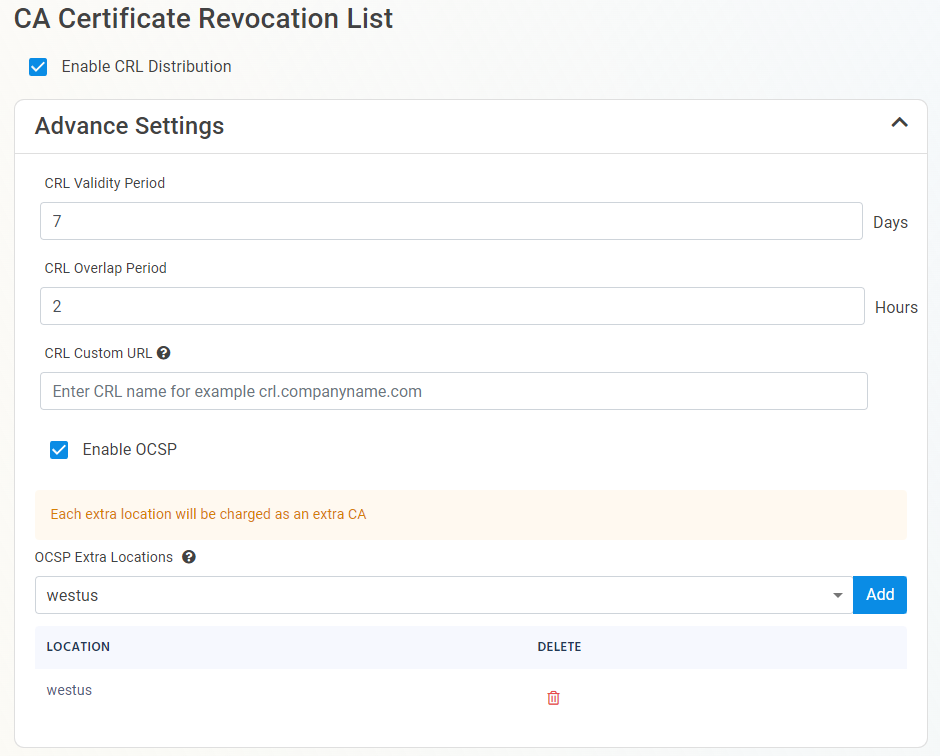
- Once you have setup your certificate revocation, click Next.

Set The Certificate Issuance Policy
- The first thing we must select is what type of CA we want to create, in this example we are creating an “SSL CA” which can be used for Azure IoT our integrated Azure Key Vault, ACME or any other SSL/TLS use case. If you need a different type of CA, for example scep for an mdm or root CA, select the appropriate template.
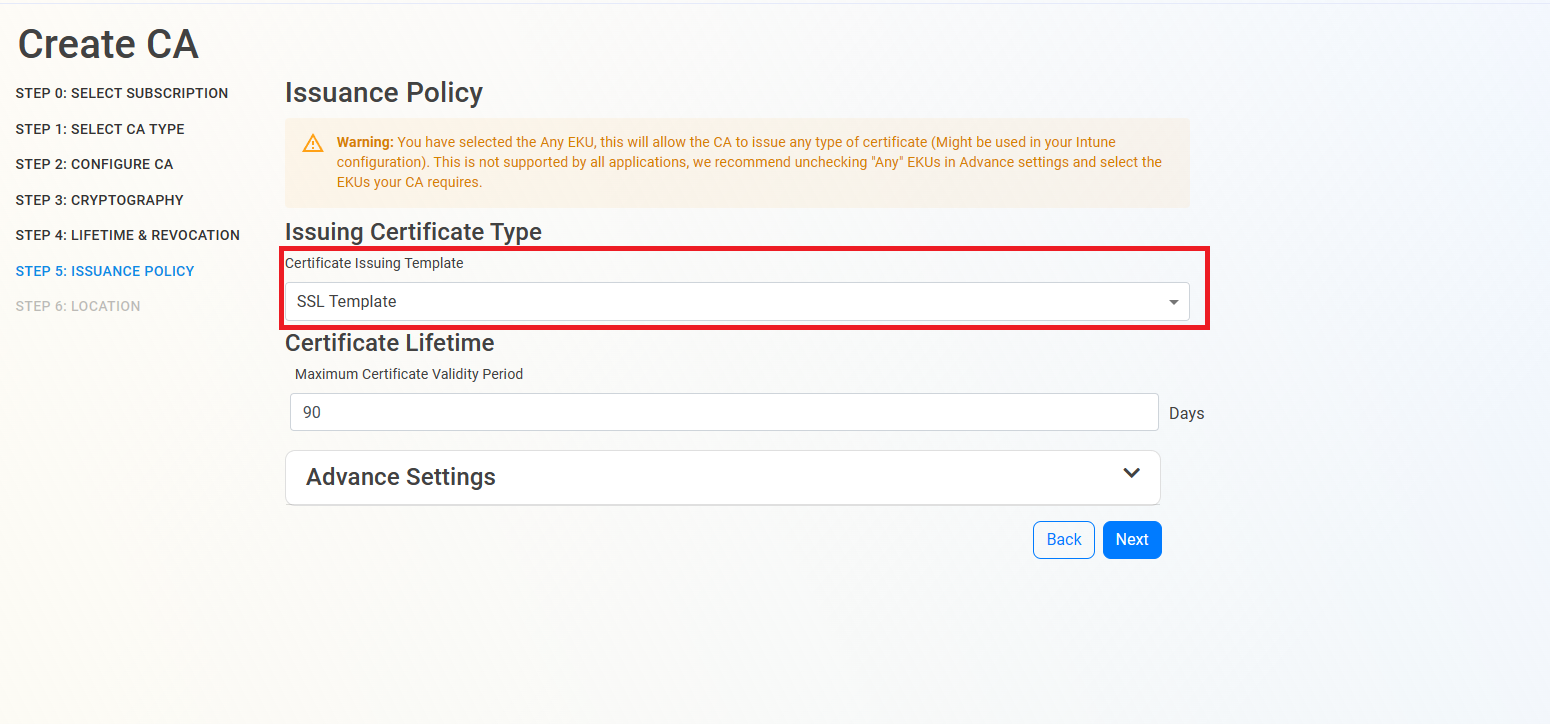
- Then, Enter the largest certificate lifetime that this CA can issue. EZCA automatically calculates the recommended maximum based on CA lifecycle best practices.
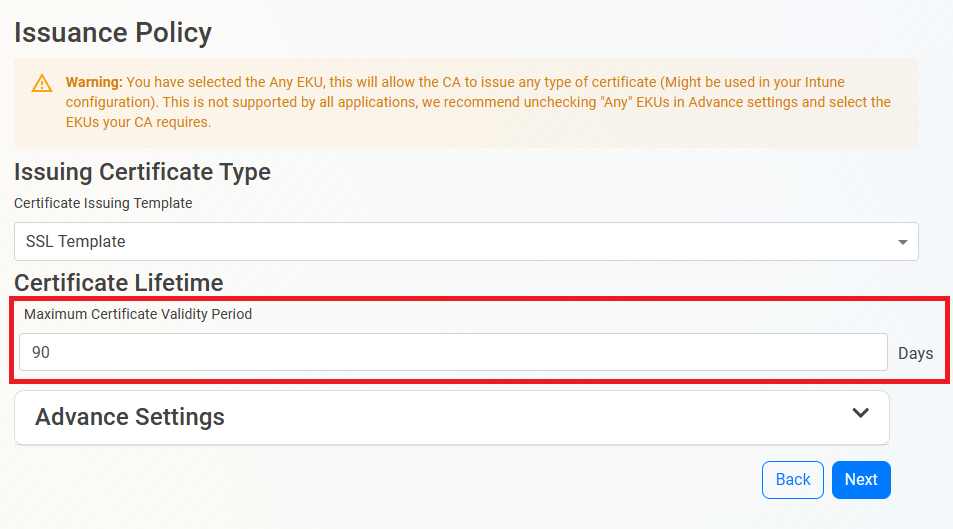
Set the EKU (Extended Key Usage)
as you can see at the top of the page there is a waring about the EKUs, by default EZCA will enable the “all” EKU, which means that this CA can issue certificates for any use case. However, there are some libraries such as OpenSSL that do not support this EKU type. If you want to change the EKUs for a specific use case, you can do so by expanding the advanced settings and selecting the desired EKUs (unselect any before making other selections).
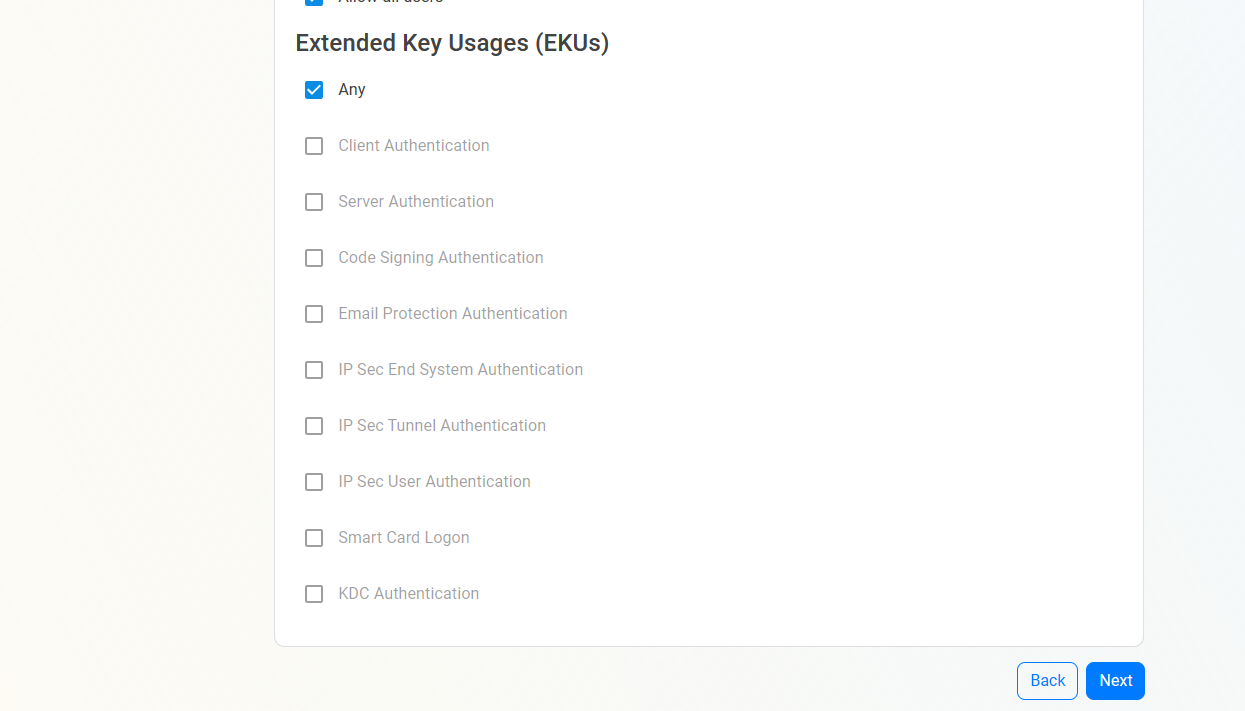
Issuance Policy (Advanced Settings)
This section gives you grater granularity on who can request. This is not required for most organizations.
- Click the expand button

Pre-Approved List of domains
- Since this is not a publicly trusted CA, by default EZCA will allow requesters to register any domains. If you want to limit which domains can this CA issue, Select the “Allow Only Pre-Approved List of Domains” option.
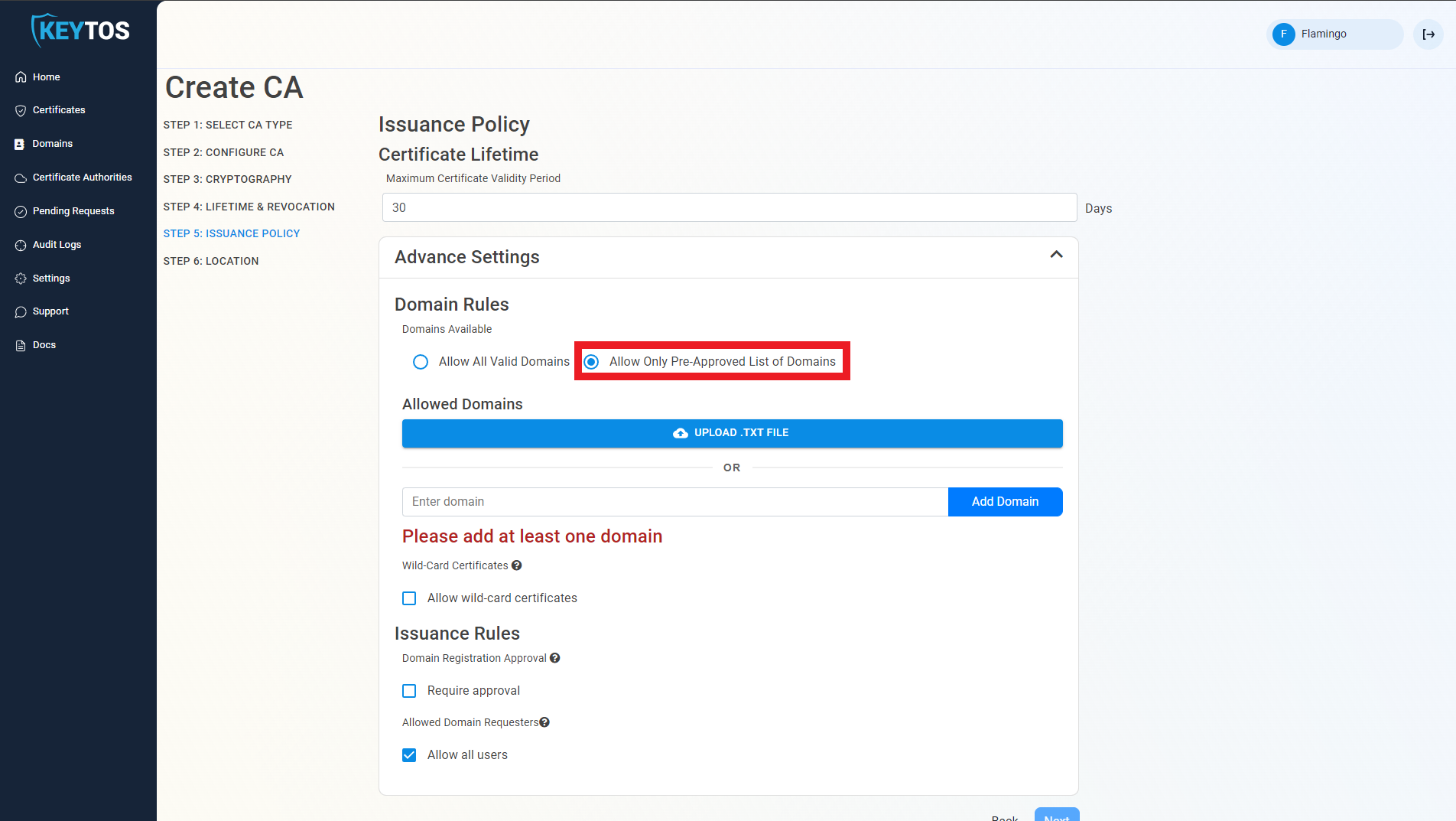
- Upload a .txt file with your Pre-Approved domains (one per line), or enter them in the portal.
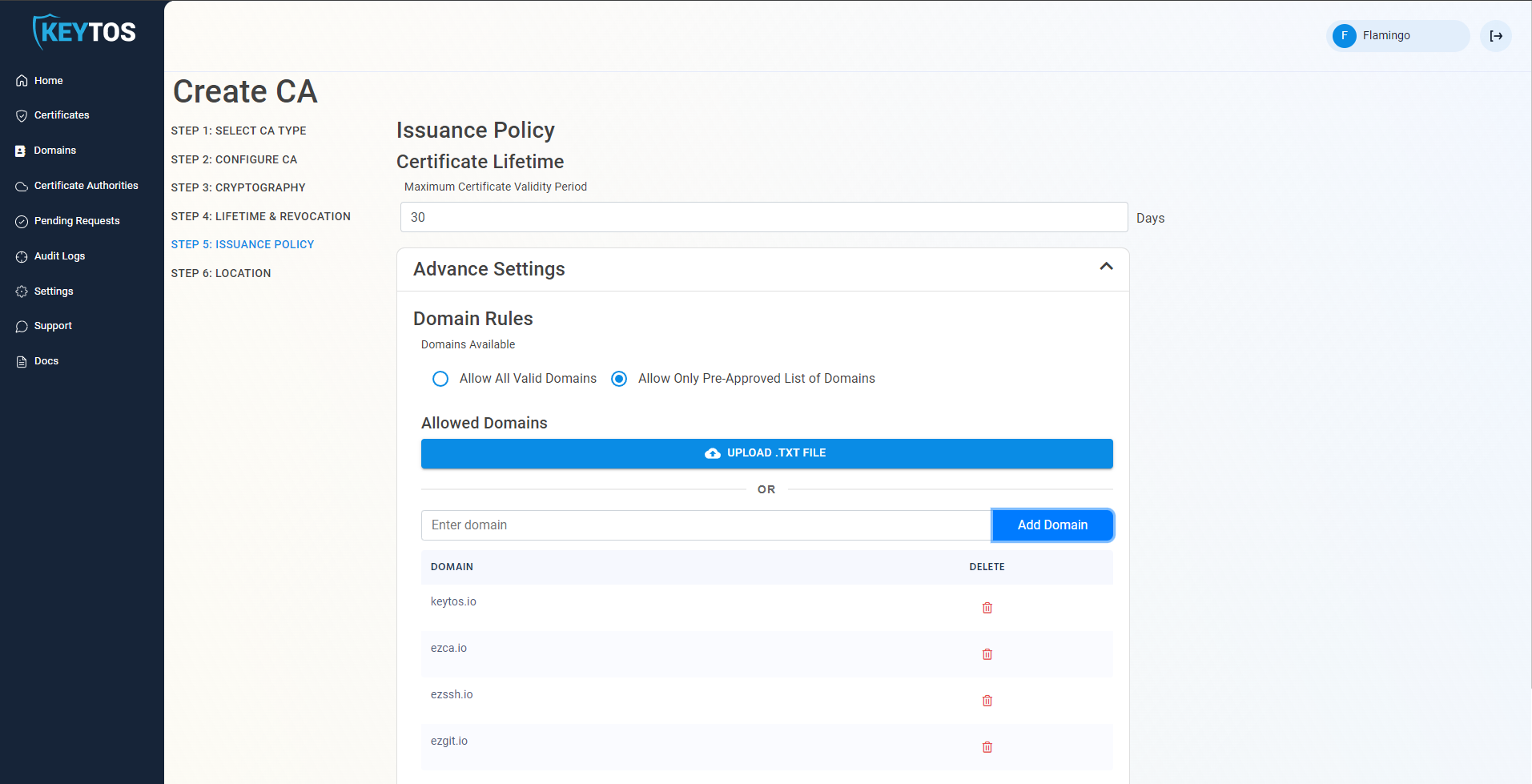
Allow Wildcard Domains
By default EZCA does not allow users to request certificates with wildcard domains (a domain that starts with *. which allows you to use that same certificate for all other subdomains). If you want EZCA to issue wildcard certificates, select the “Allow wild-card certificates” option.
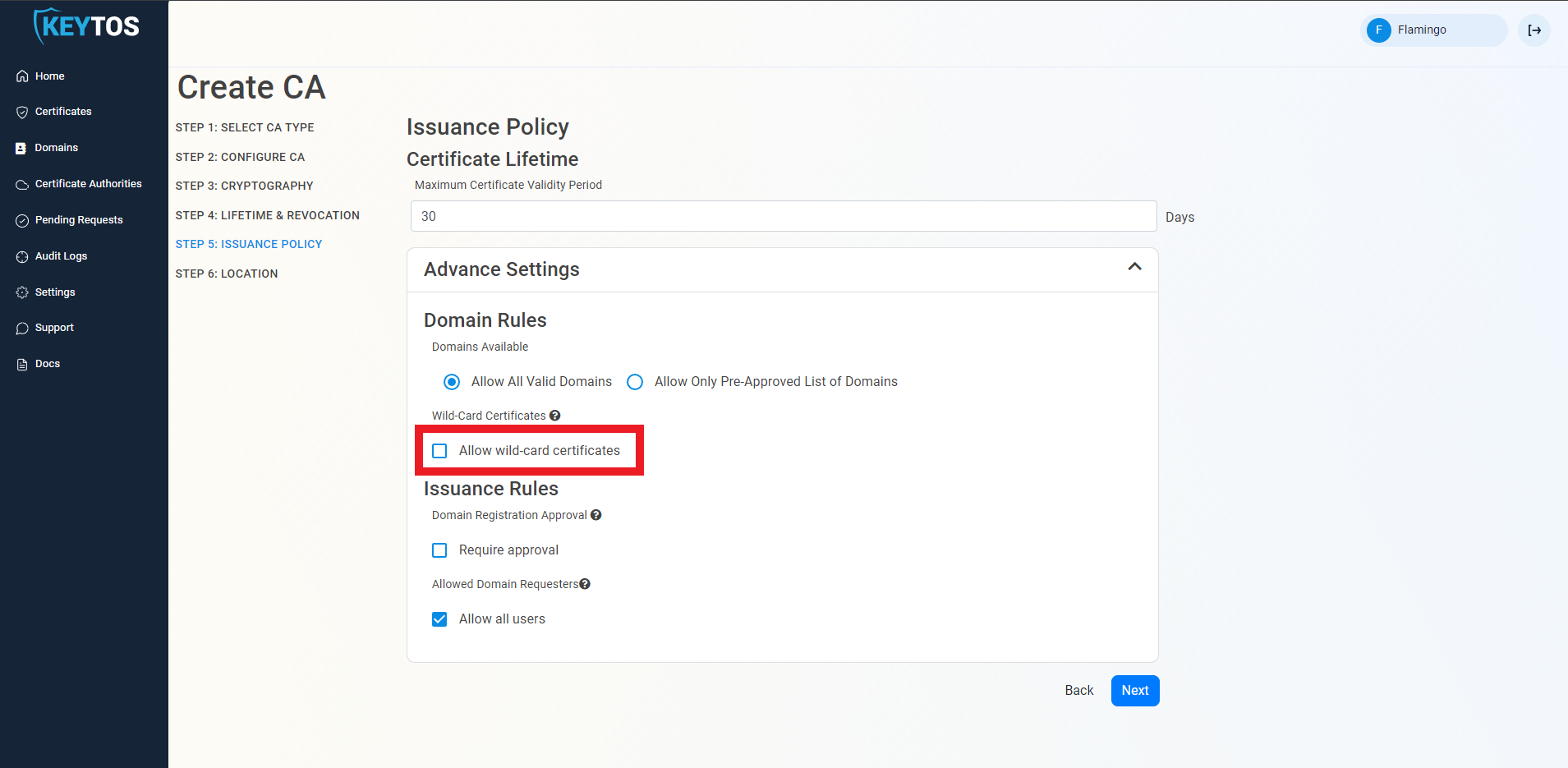
Certificate Issuance Rules
To enable more granular control who can request domain ownership in EZCA, we created to extra knobs PKI administrators can adjust to control domain ownership.
-
Require domain registration approval. This option enables PKI administrators to set a group of approvers that must approve each domain registration before a user or group of users are registered as domain owners.
- To enable this option select the “require approval” option.
- Enter the users or AAD groups that can approve domain requests.
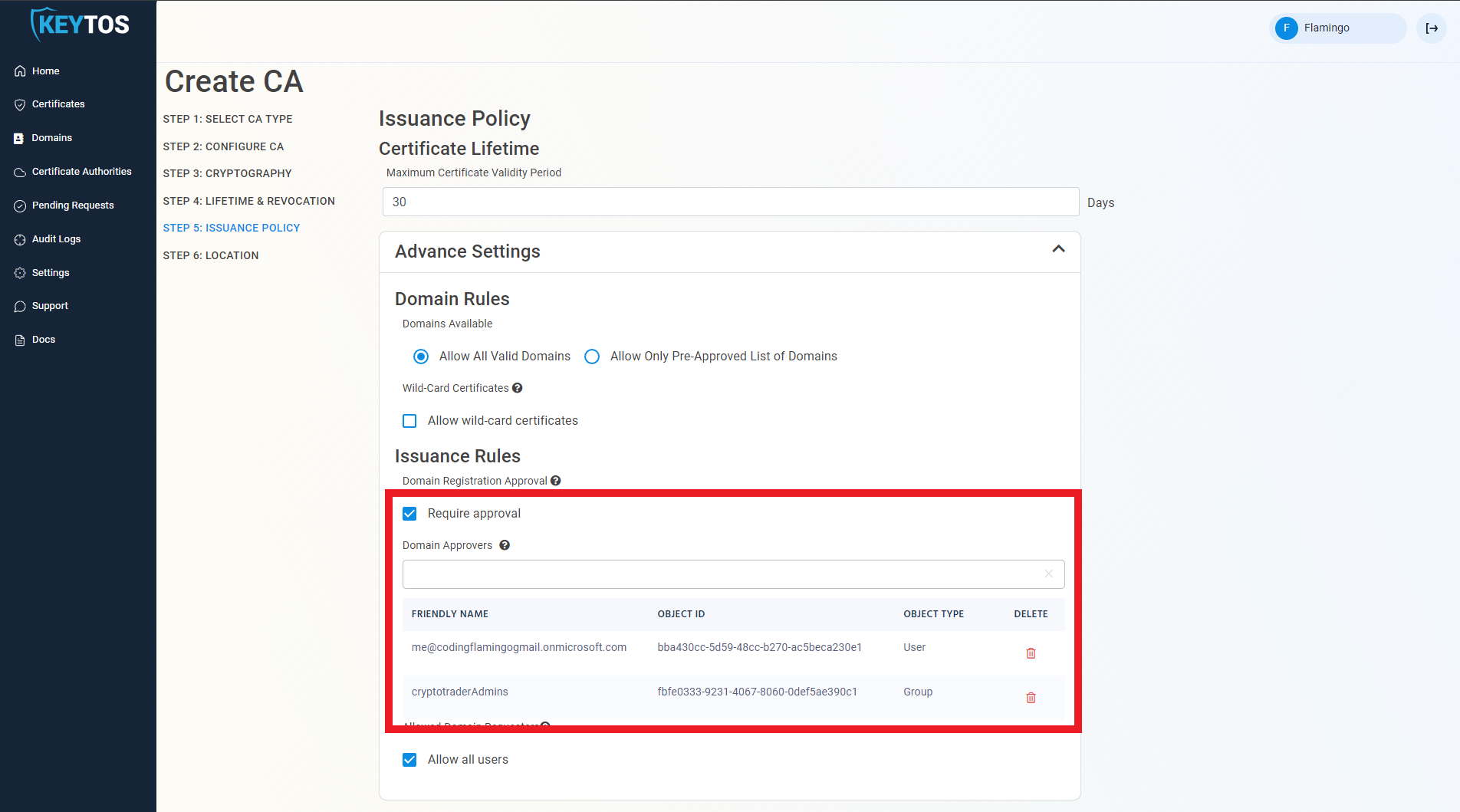
-
The second way PKI administrators can control the registration of domains is to only allow specific users to request domains. This option enables PKI administrators to set a list of users that can request domains for this CA.
- To enable this option deselect the “Allow all users” option.
- Enter the users or AAD groups that can register domains.
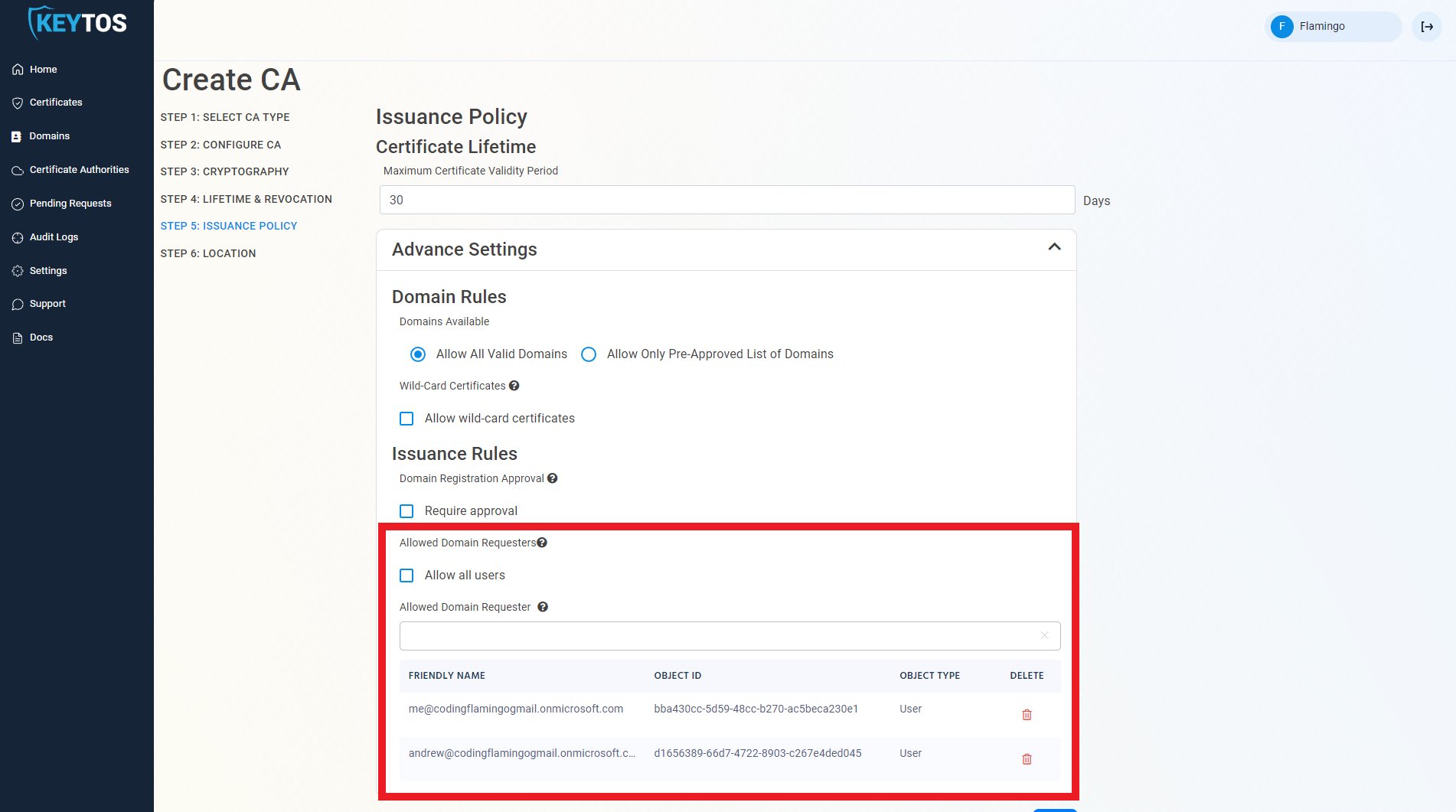
-
Once you are done setting up your issuance policy, click Next.

Select Location
- Select the location where you want your CA to be created.

How To Add Geo-Redundancy to Your PKI
EZCA Allows you to create multiple CAs across many regions to create Geo-Redundancy.
Each location will be charged as an extra Certificate Authority.
- Click the “Add Secondary Location” Button.

- Enter the Location information.
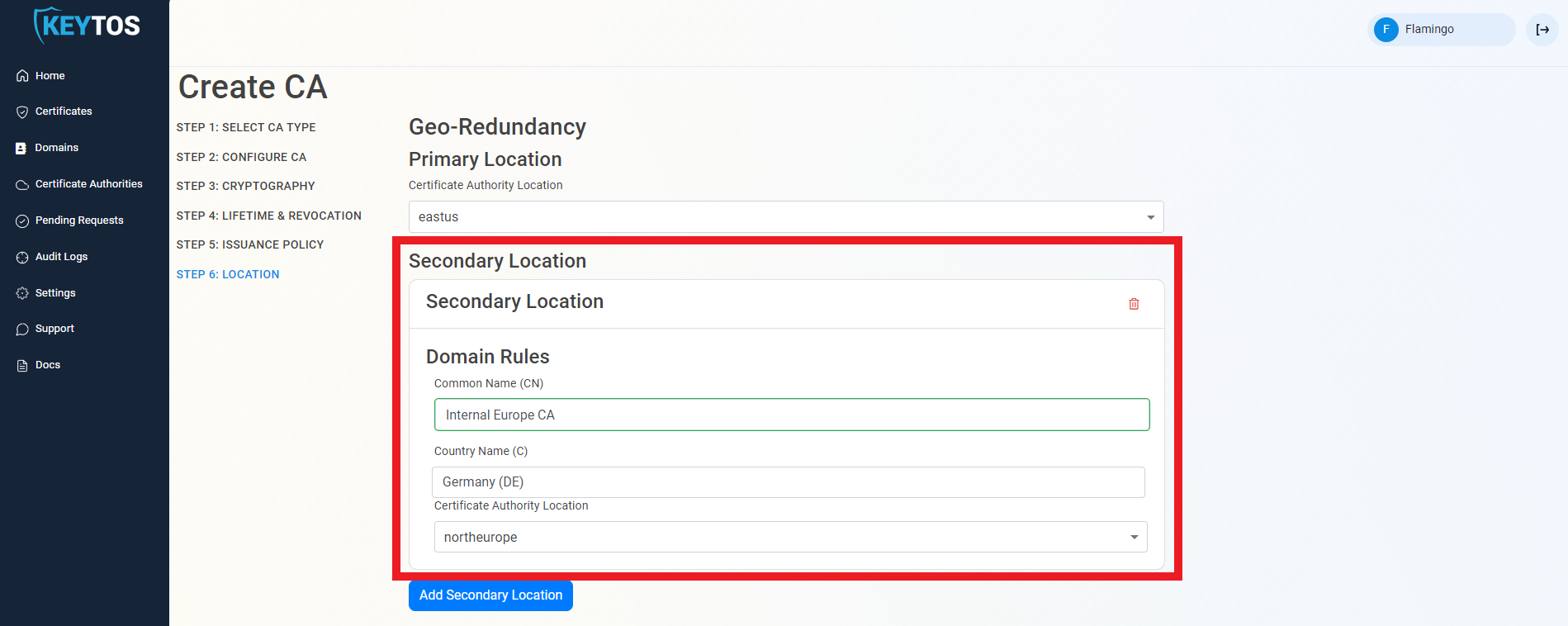
- Add as many locations as needed.
Create CA
- Click Create.

Chaining to EZCA Root CA
- Once the CA is requested, a Certificate Signing Request (CSR) will be created for each location.
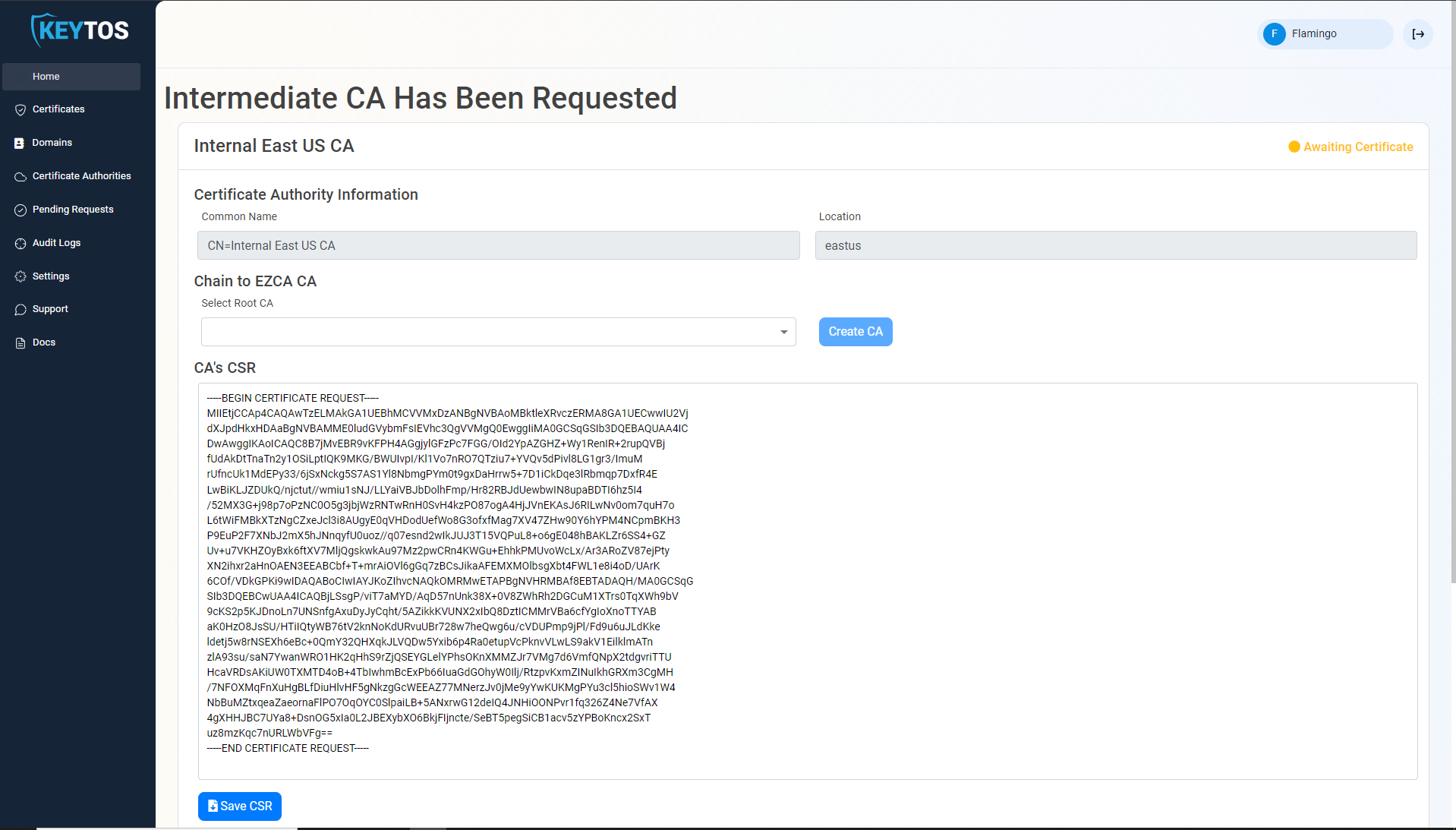
- If your desired Root CA is an EZCA CA, Select it from the dropdown and click create CA.
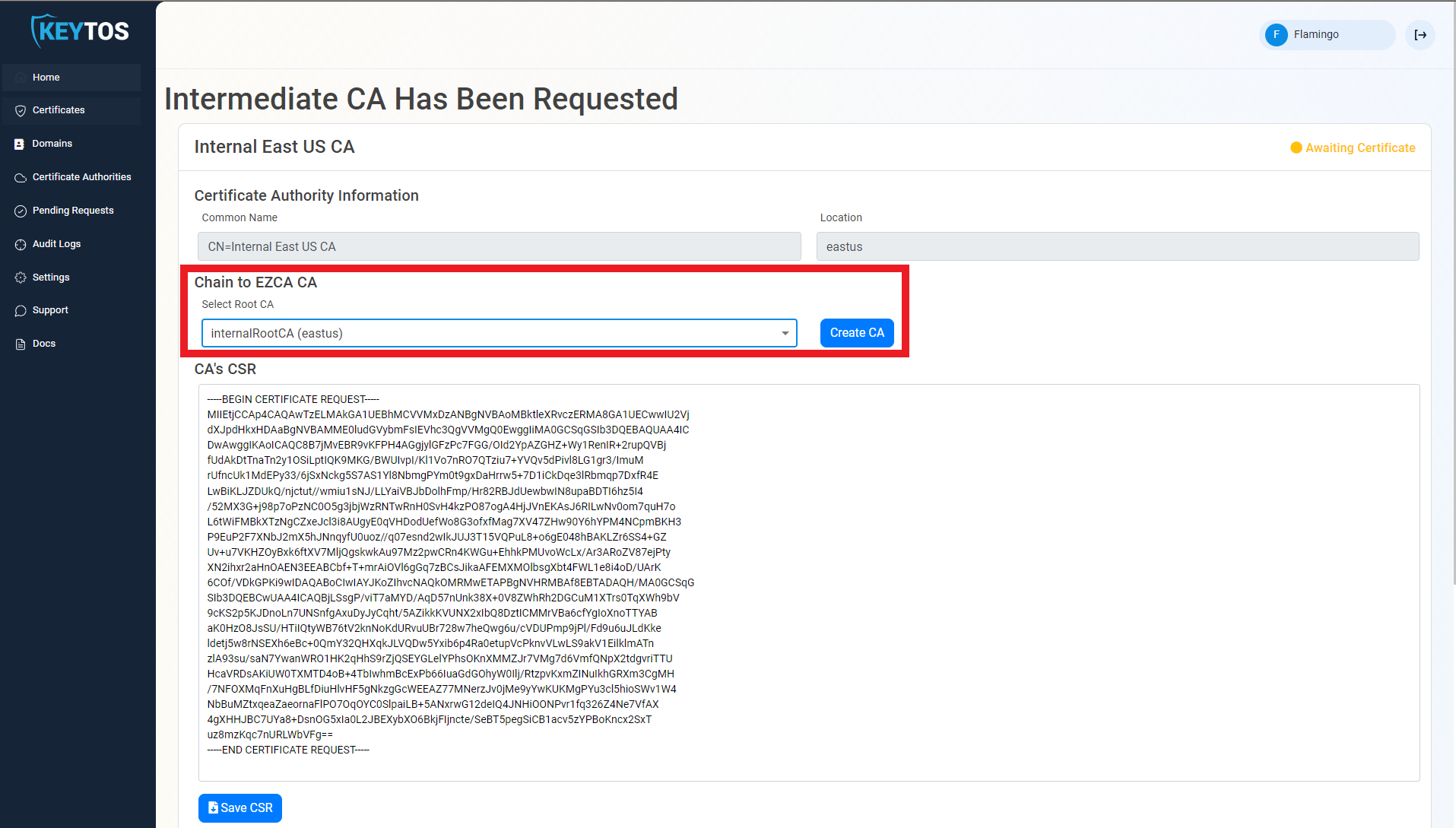
- Repeat these steps for each location.
- Your CA is ready to be used!
- Next step: Register your first domain
Chaining to Offline Root CA
If you prefer to chain your CA to an offline Root CA, follow these steps.
- Once the CA is requested, a Certificate Signing Request (CSR) will be created for each location.

- Click the “Save CSR” Button.
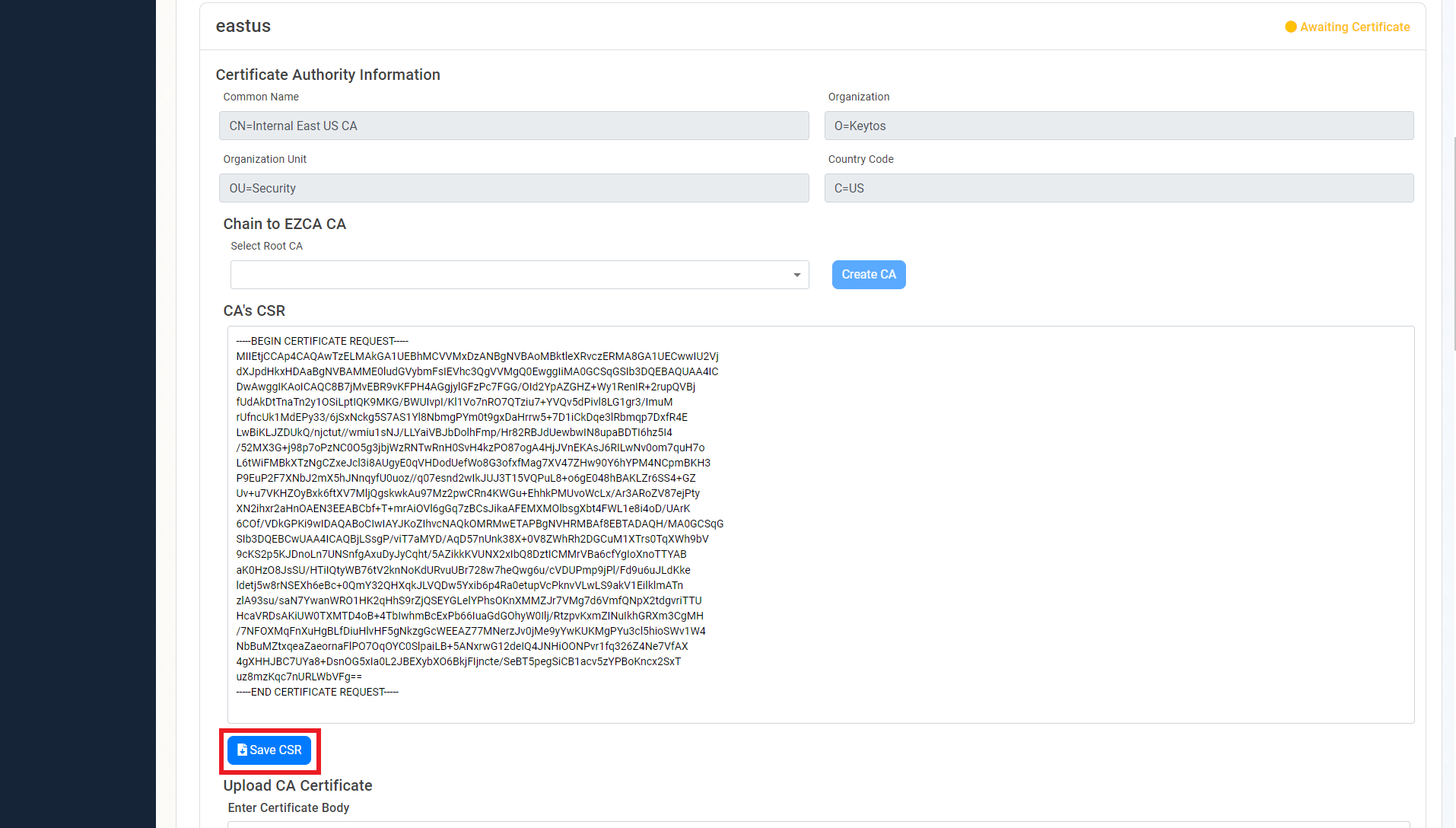
- Once the CSR is download, follow your internal guidance to transfer that CSR to your offline Root CA.
- Open your “Certificate Authority” in Windows.
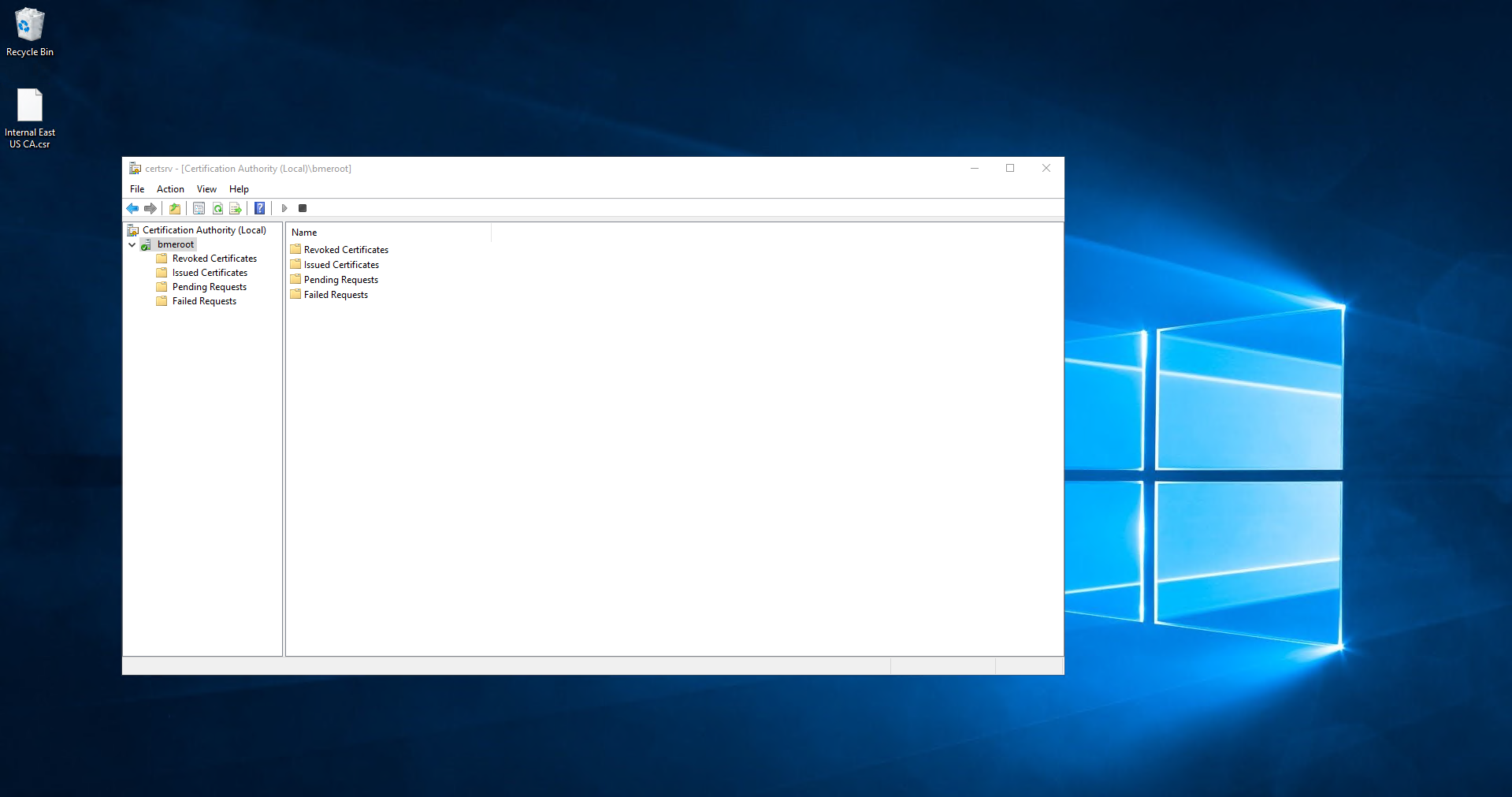
- Right click the CA.
- Select All Tasks -> Submit new Request.
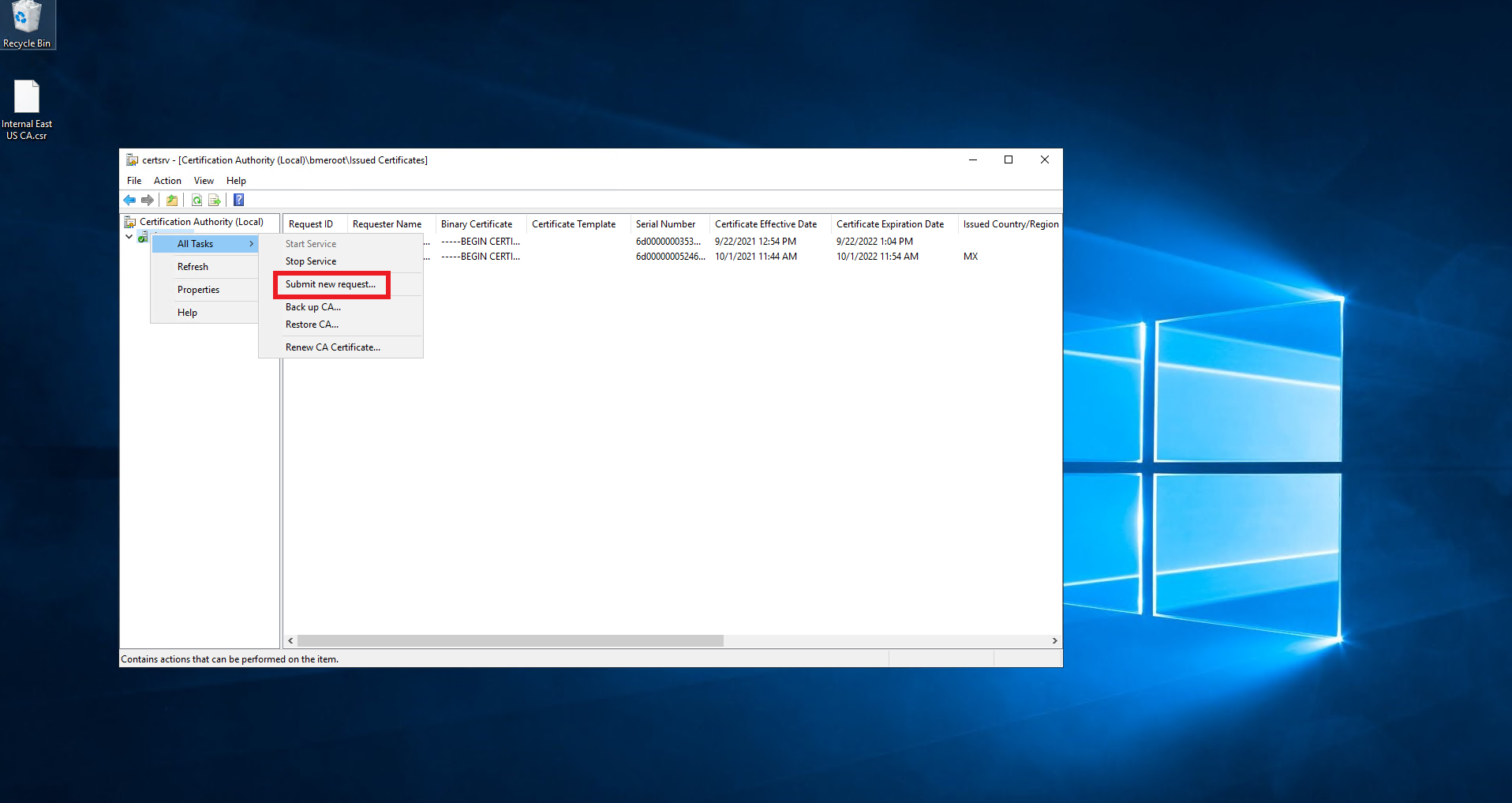
- Select the downloaded CSR.
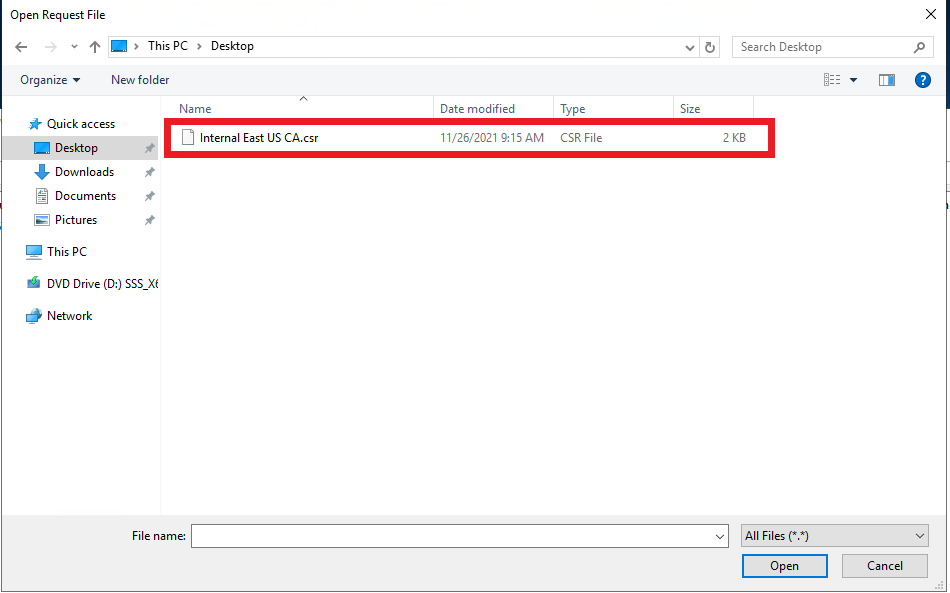
- Click on pending requests.
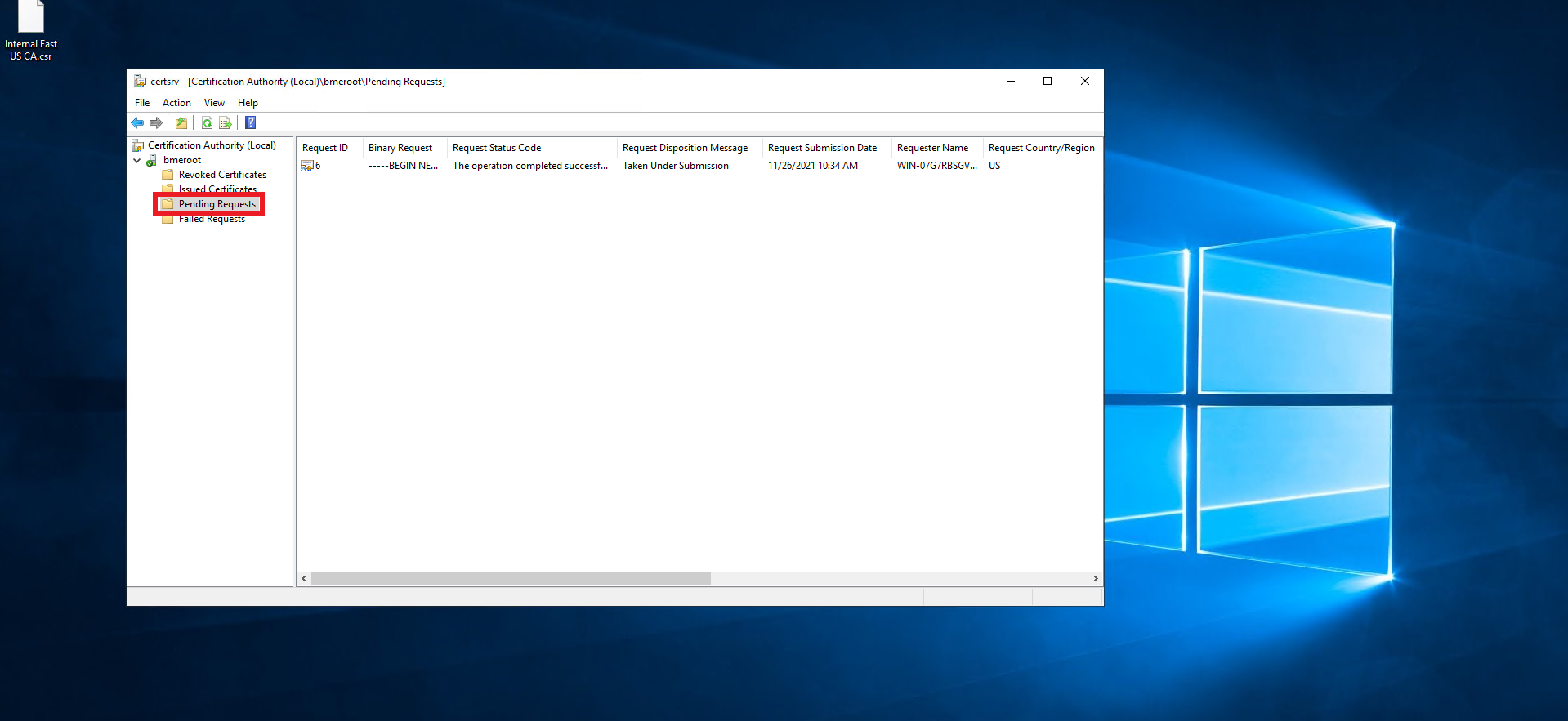
- Right click on the newly created request.
- Select All Tasks -> Issue.
- Click on Issued Certificates.
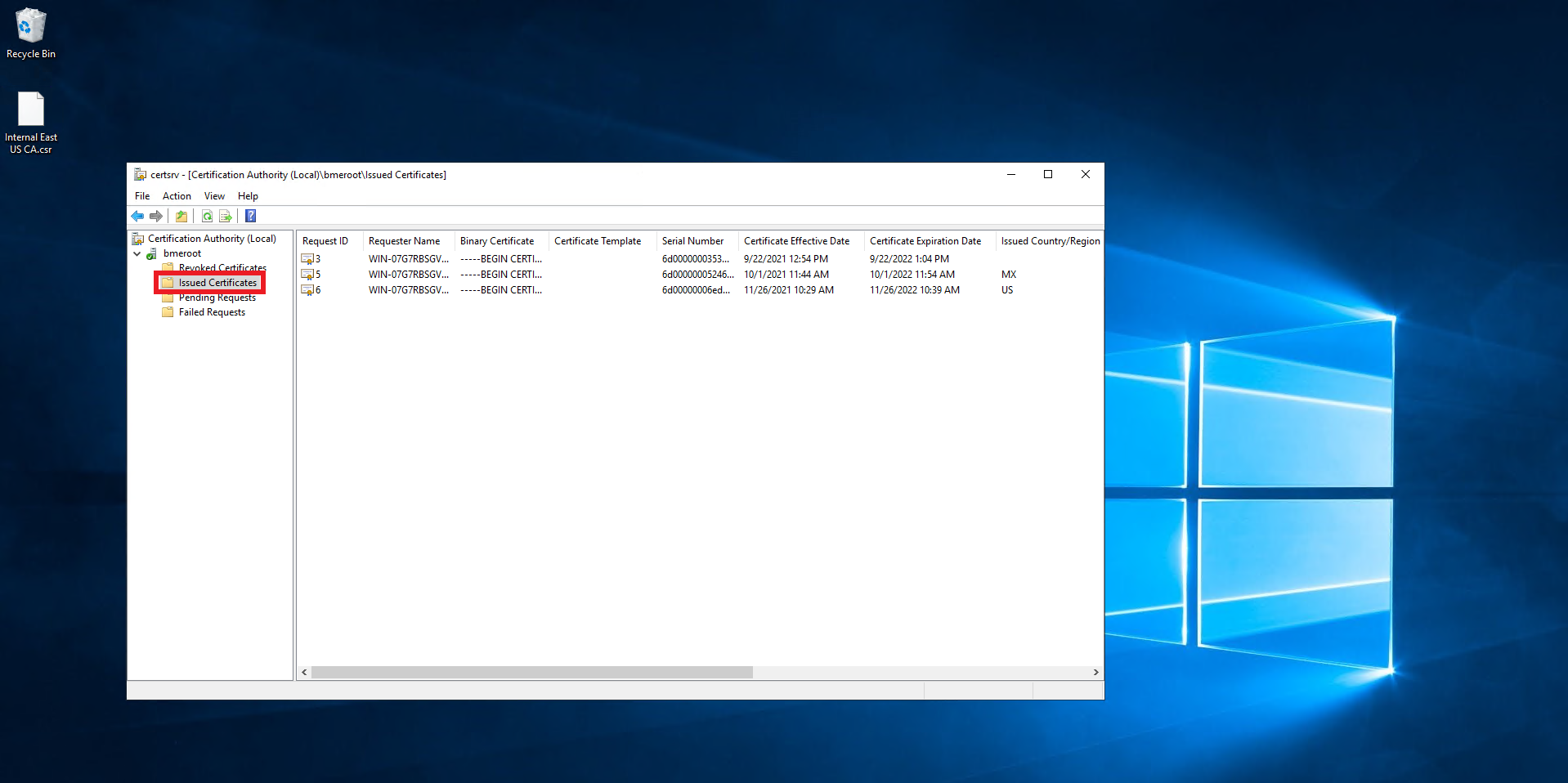
- Double click on the newly created certificate.
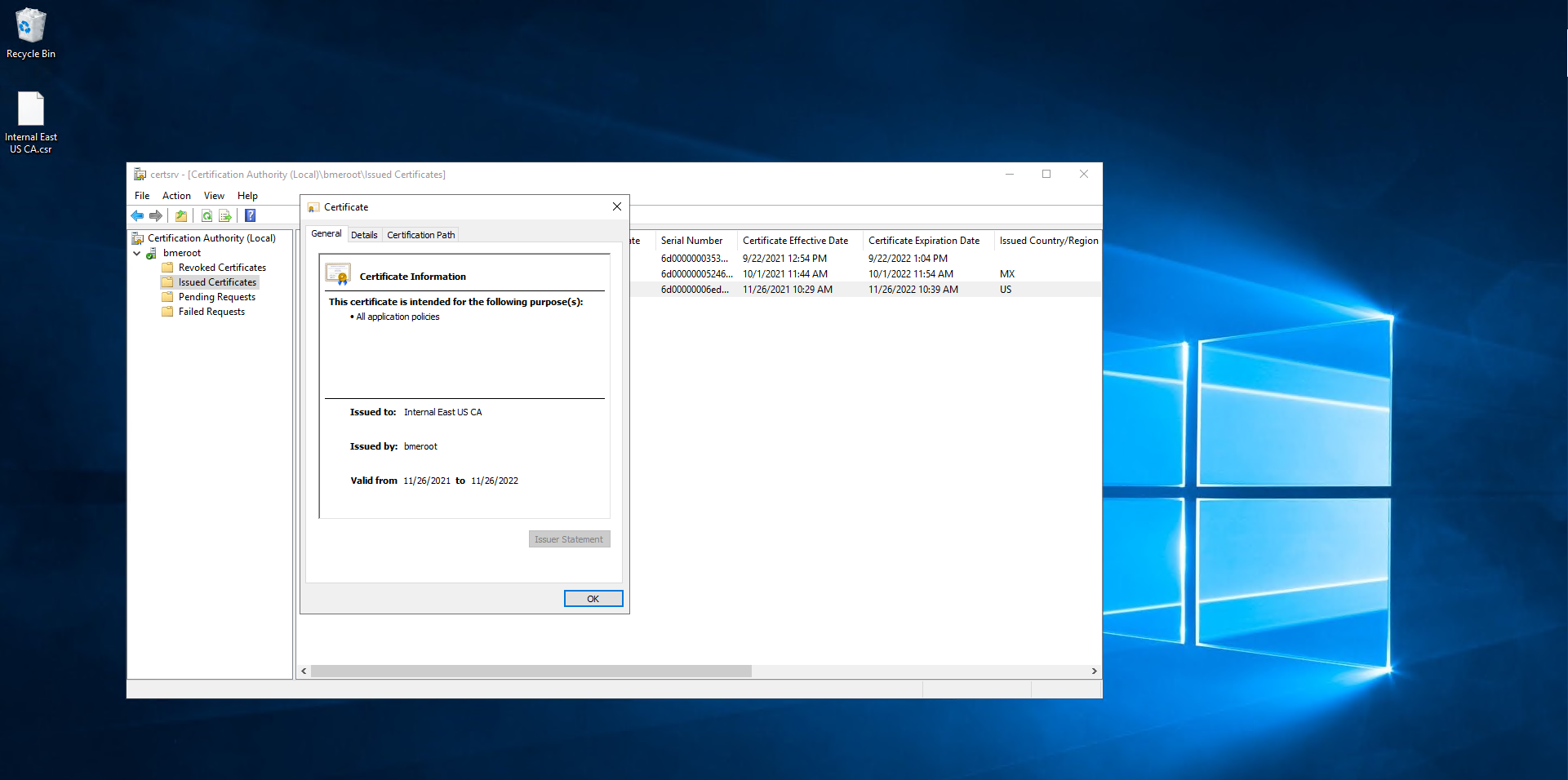
- Click on Details.
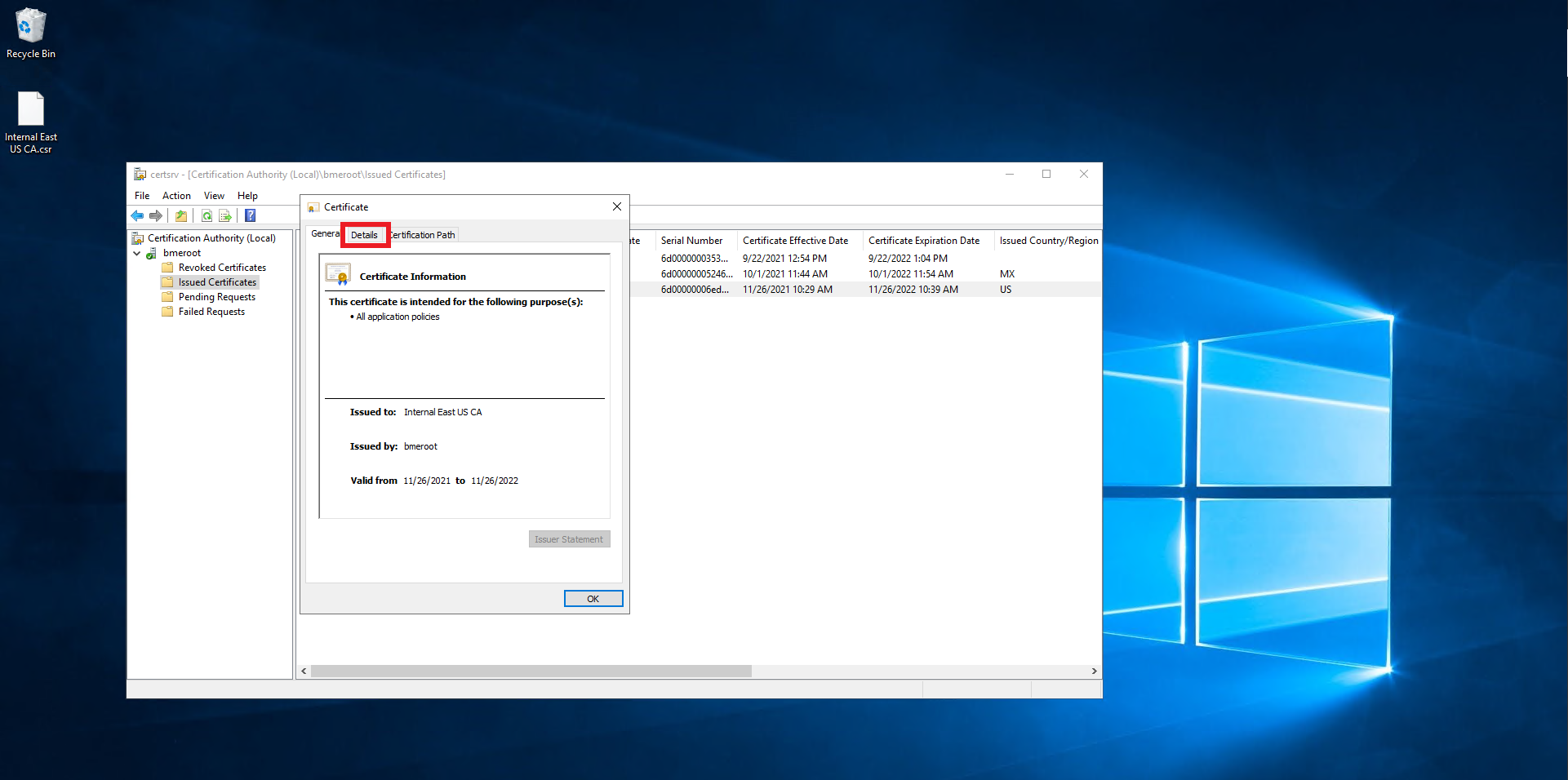
- Click on the “Copy ti File…” Button.
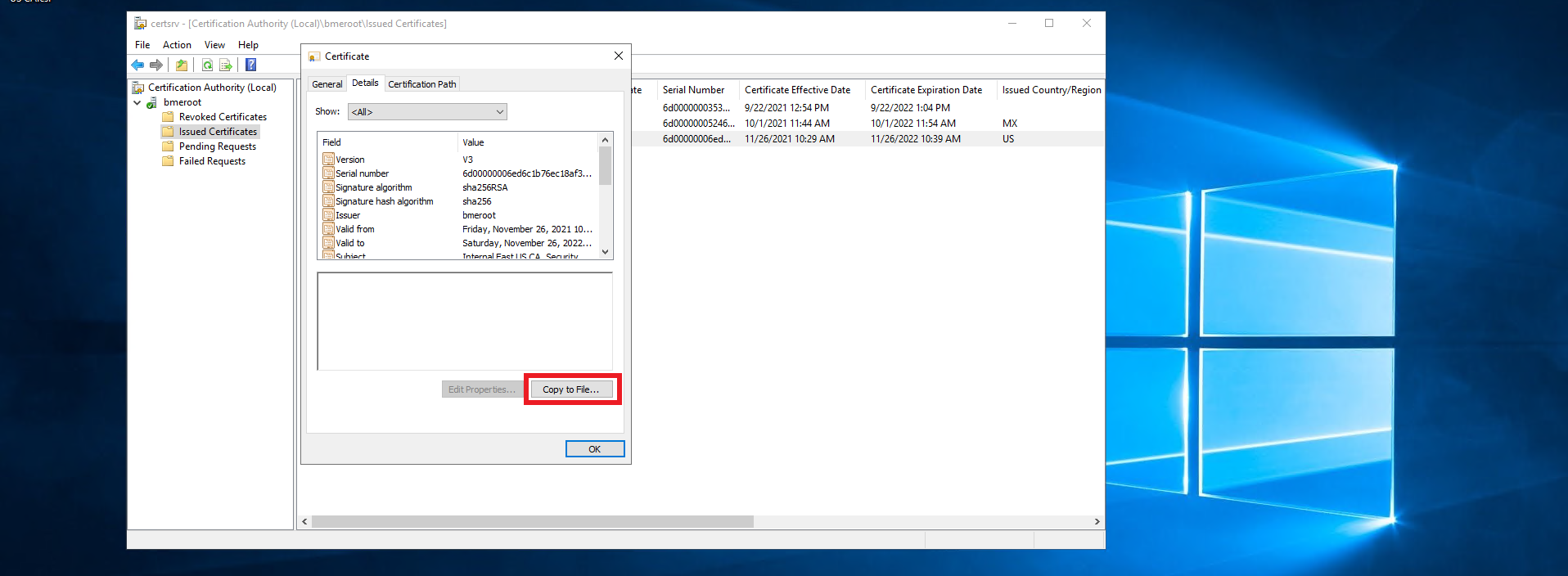
- Click next
- Select the “Base-64 encoded X.509 (.CER) option.
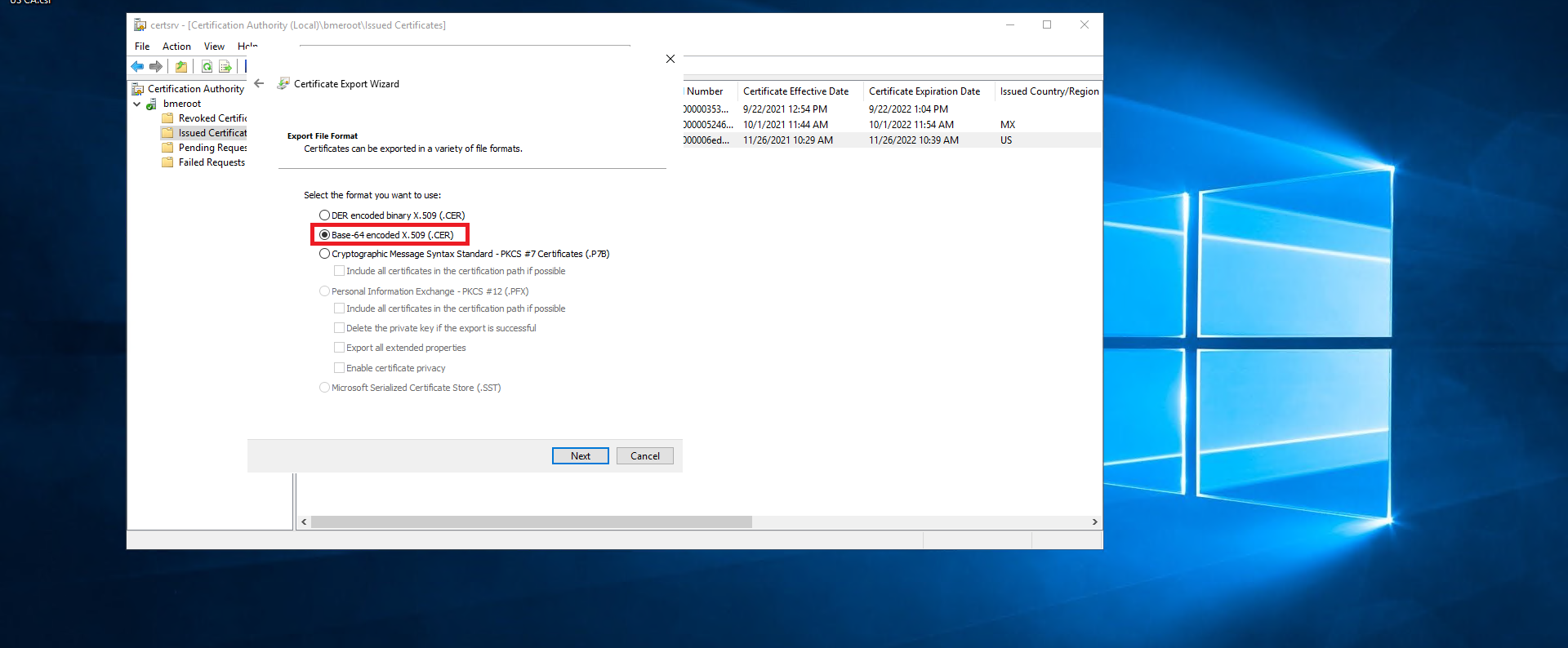
- Click next.
- Select where you want to save the newly created certificate.
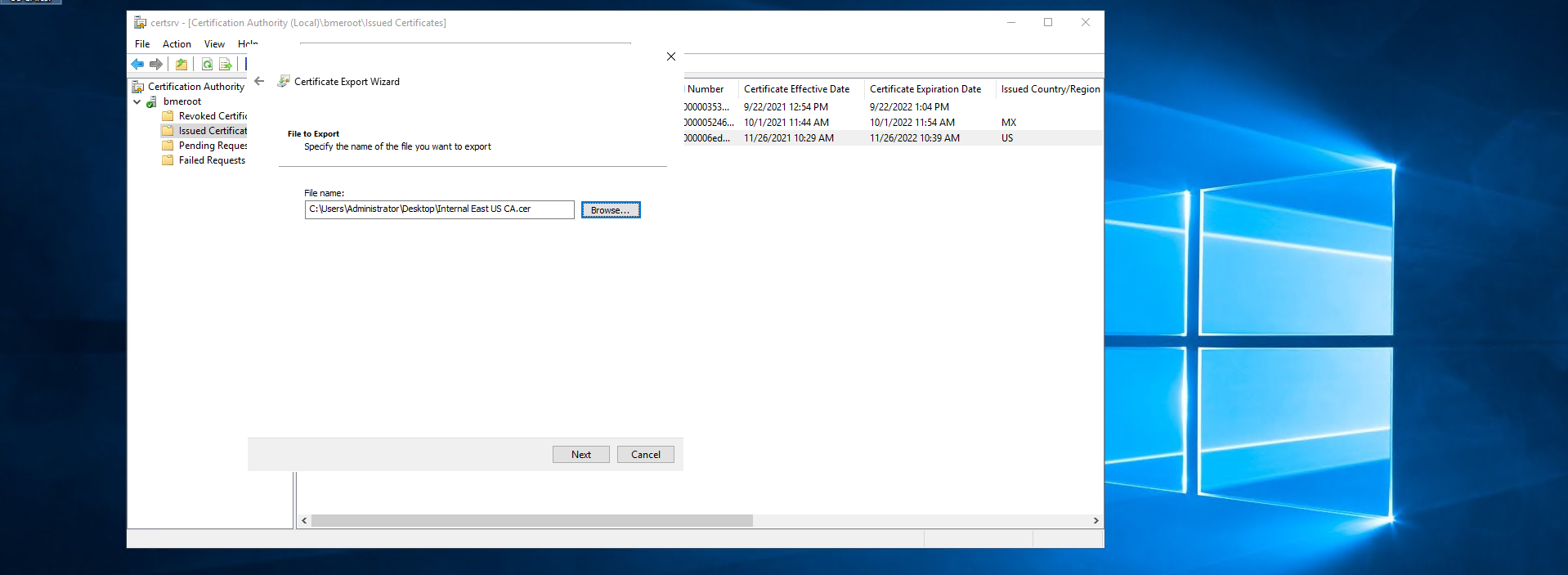
- Click next.
- Click Finish.
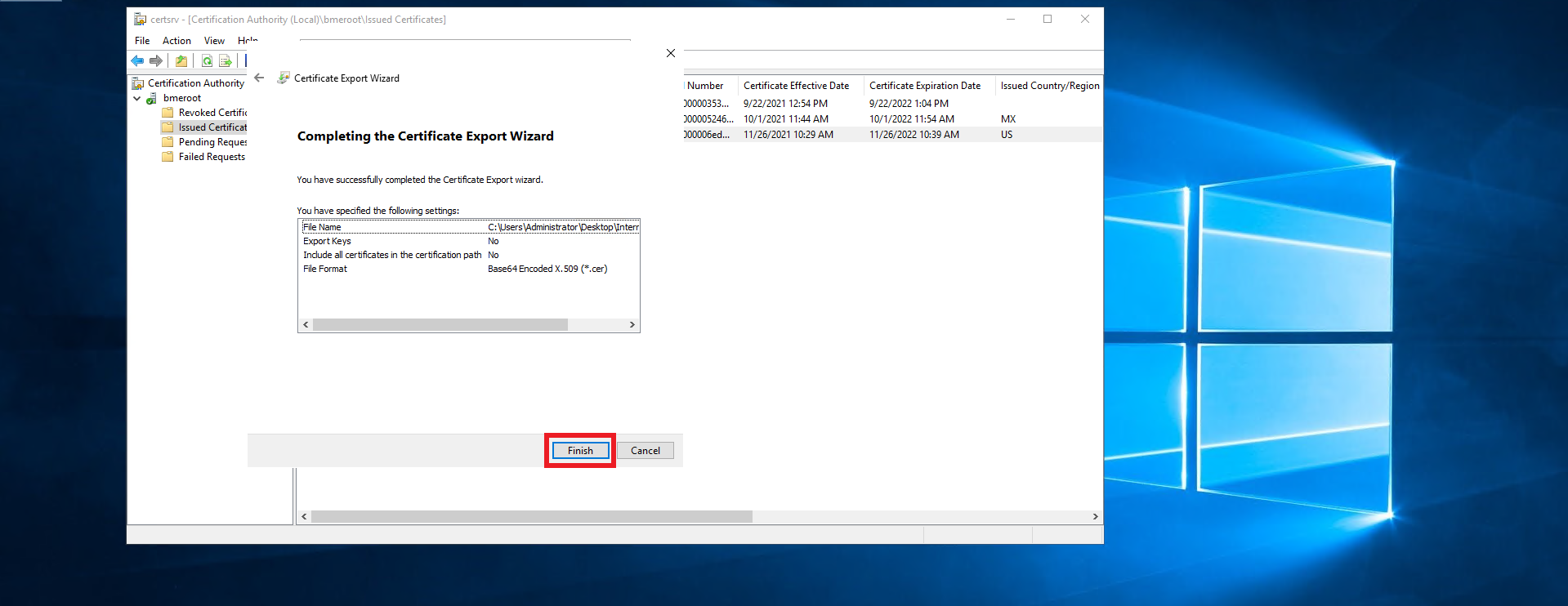
- This should create a .cer file in the location you selected.
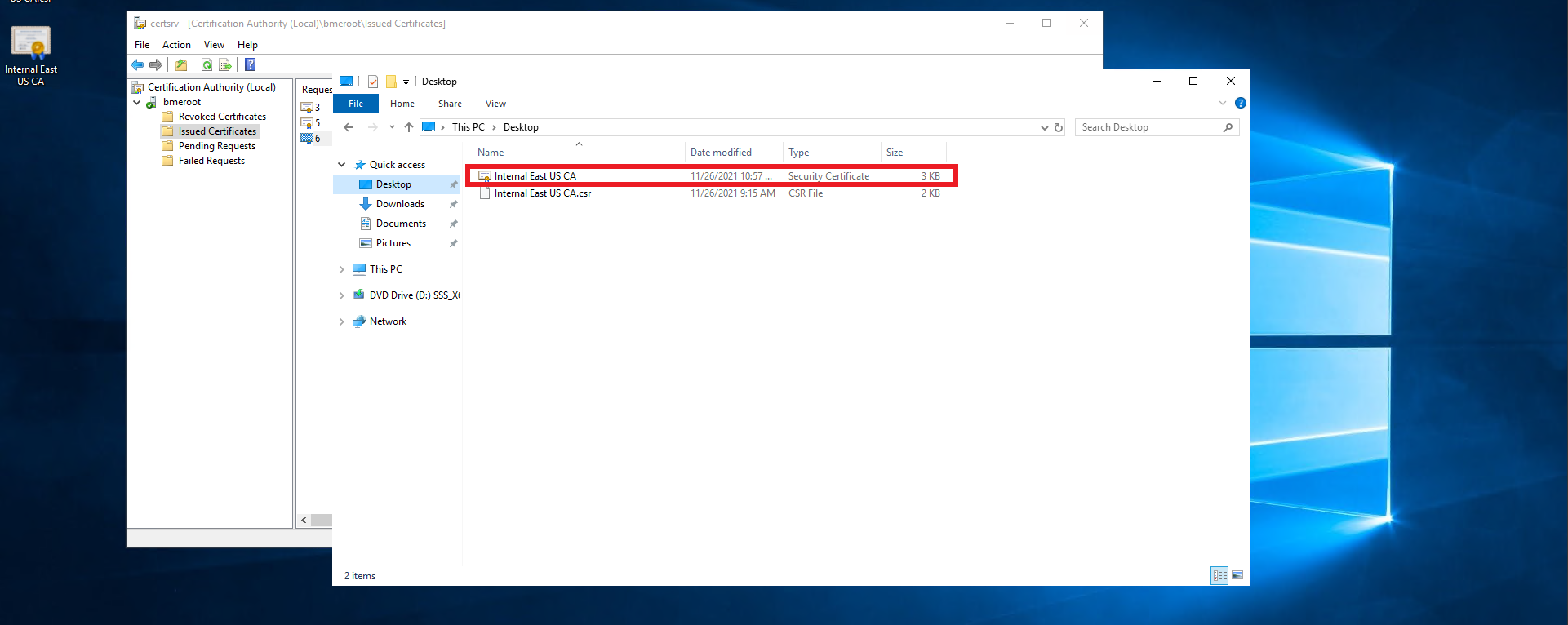
- Follow you PKI team’s guidance on transferring the certificate file out of the offline CA into an internet connected computer.
- Once you have the certificate in an internet connected computer, go to https://portal.ezca.io/
- Login with an account that is registered as a PKI Admin in EZCA.
- Navigate to Certificate Authorities.

- Click View details of the CA you want to import the certificate for.
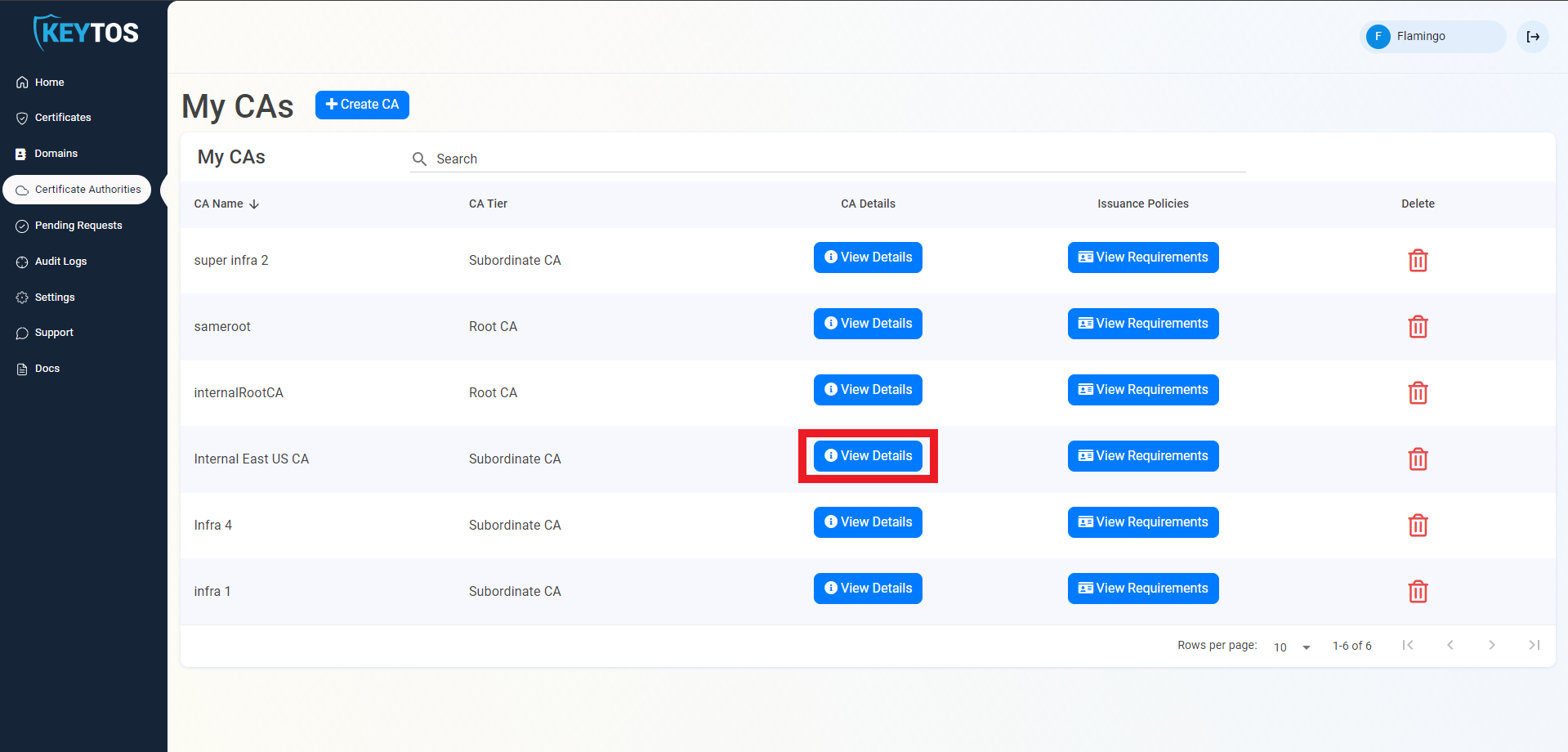
- Scroll down to the location you want to import, and click the “Upload CA Certificate” button.
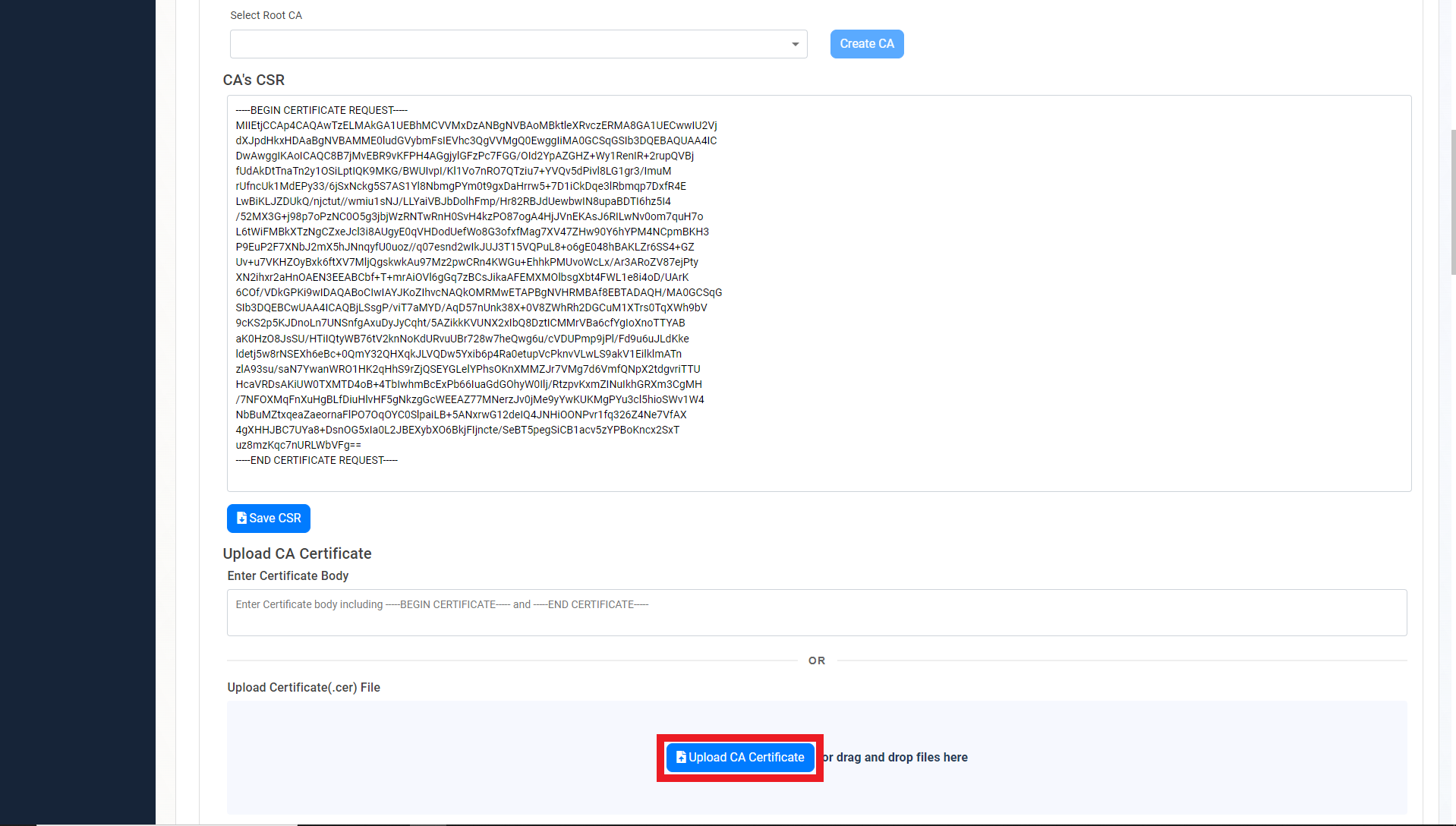
- Select the newly created certificate file.

- Click on the “Save Certificate” button

- Repeat these steps for each location.
- Your CA is ready to be used!
- Next step: Register your first domain